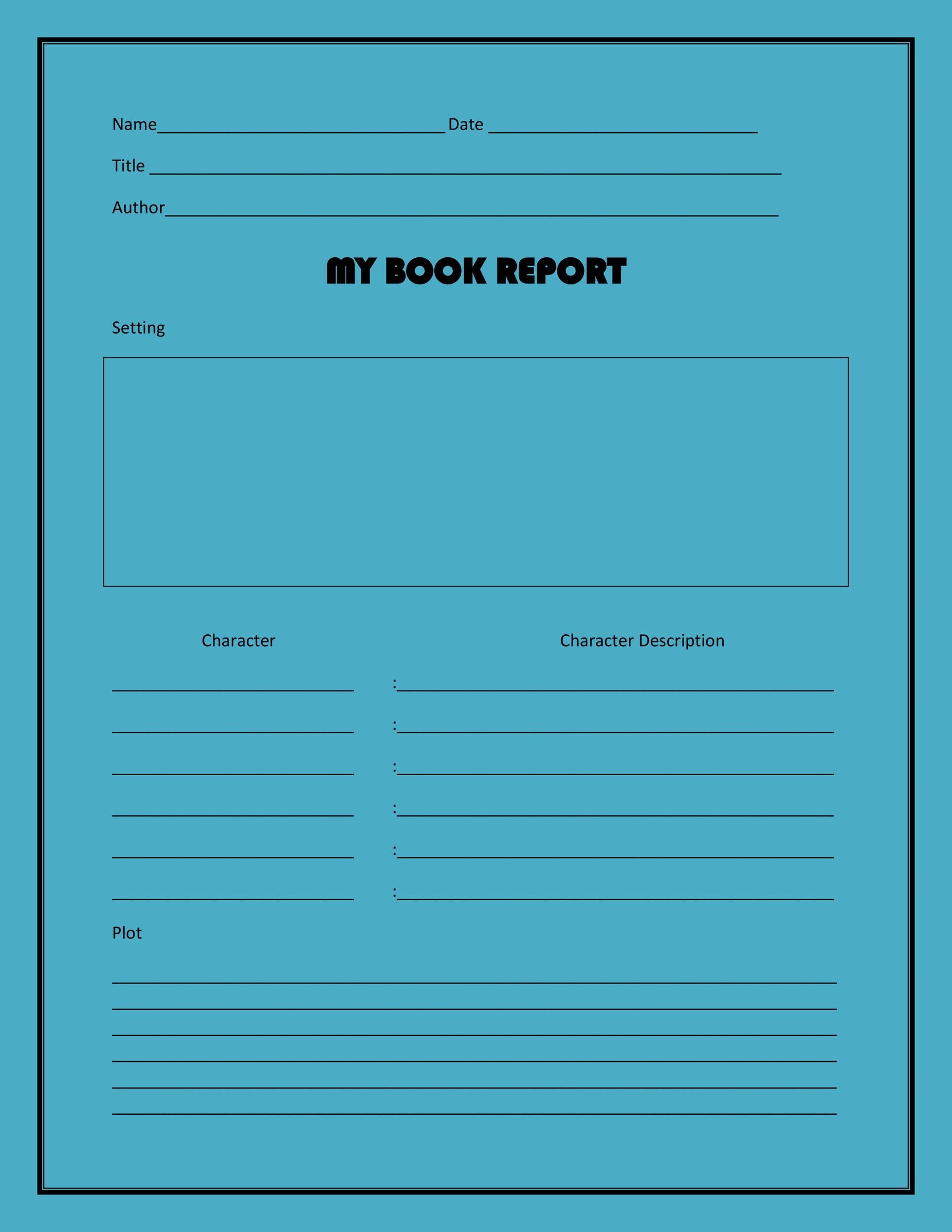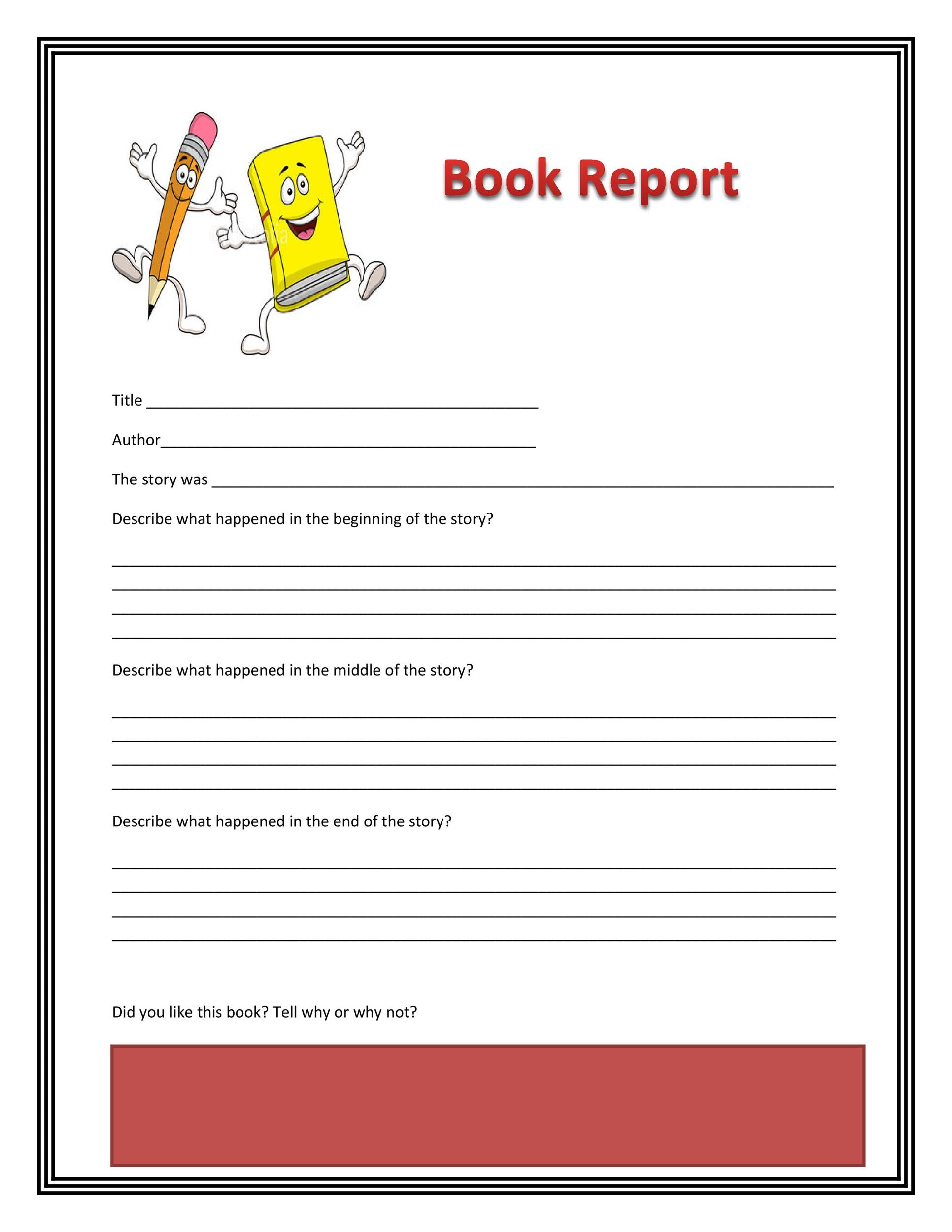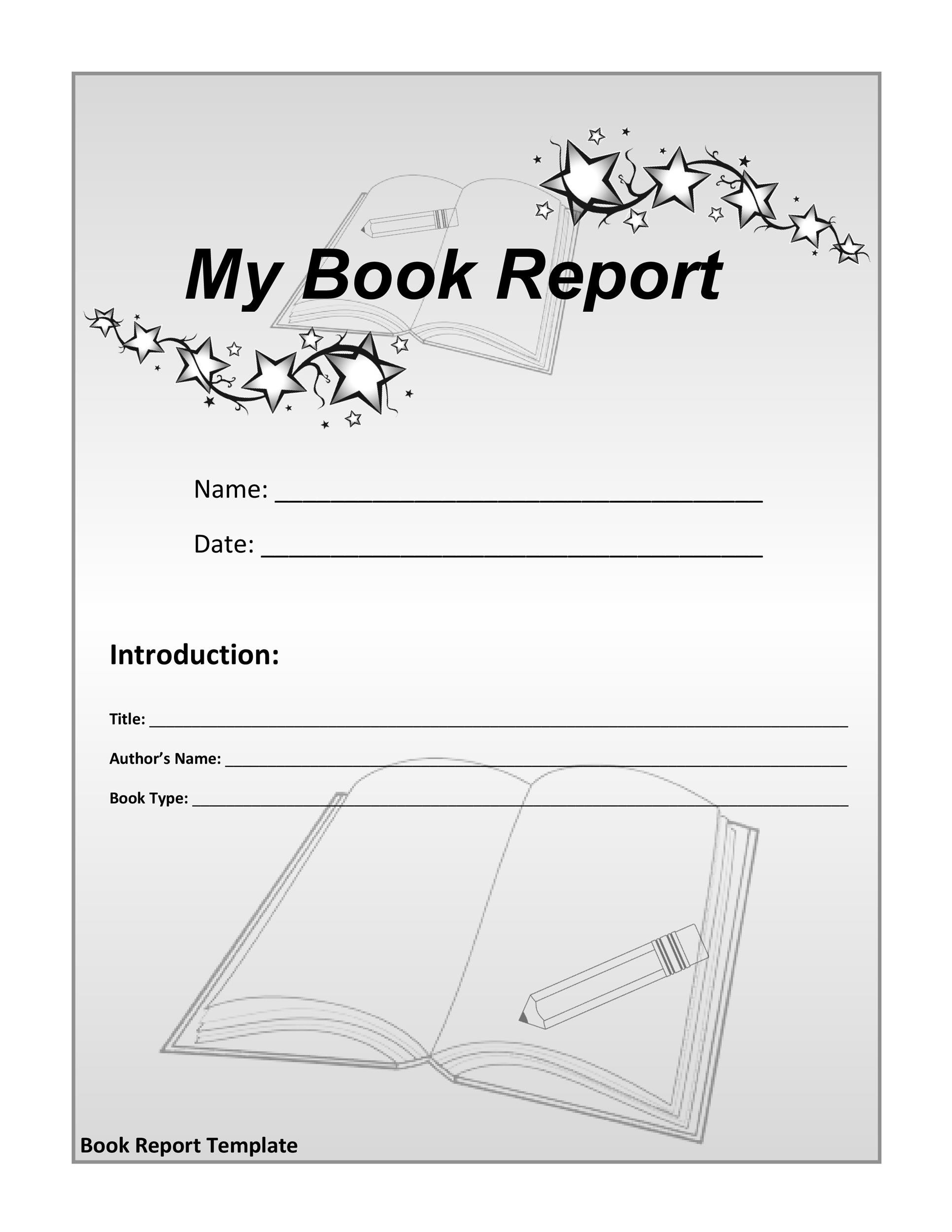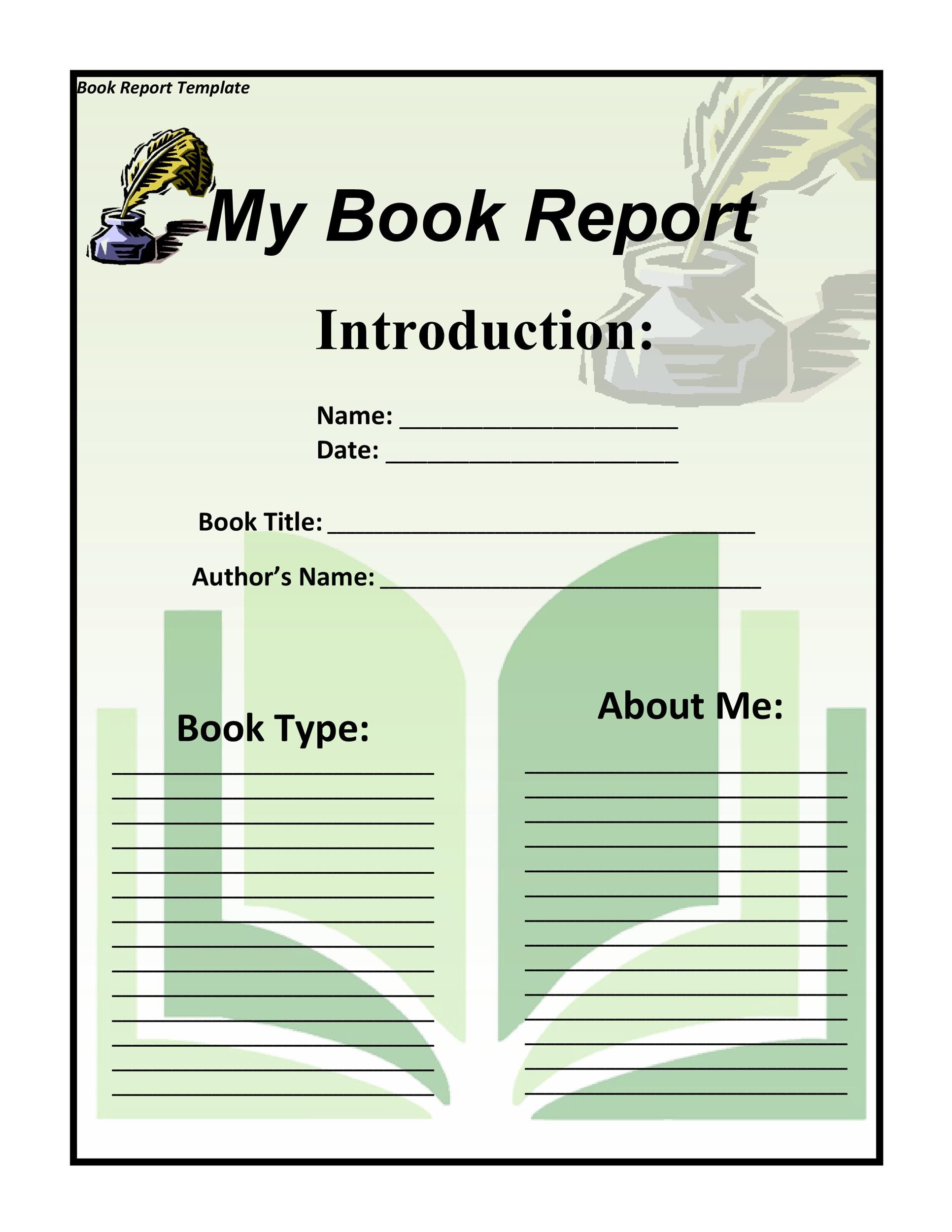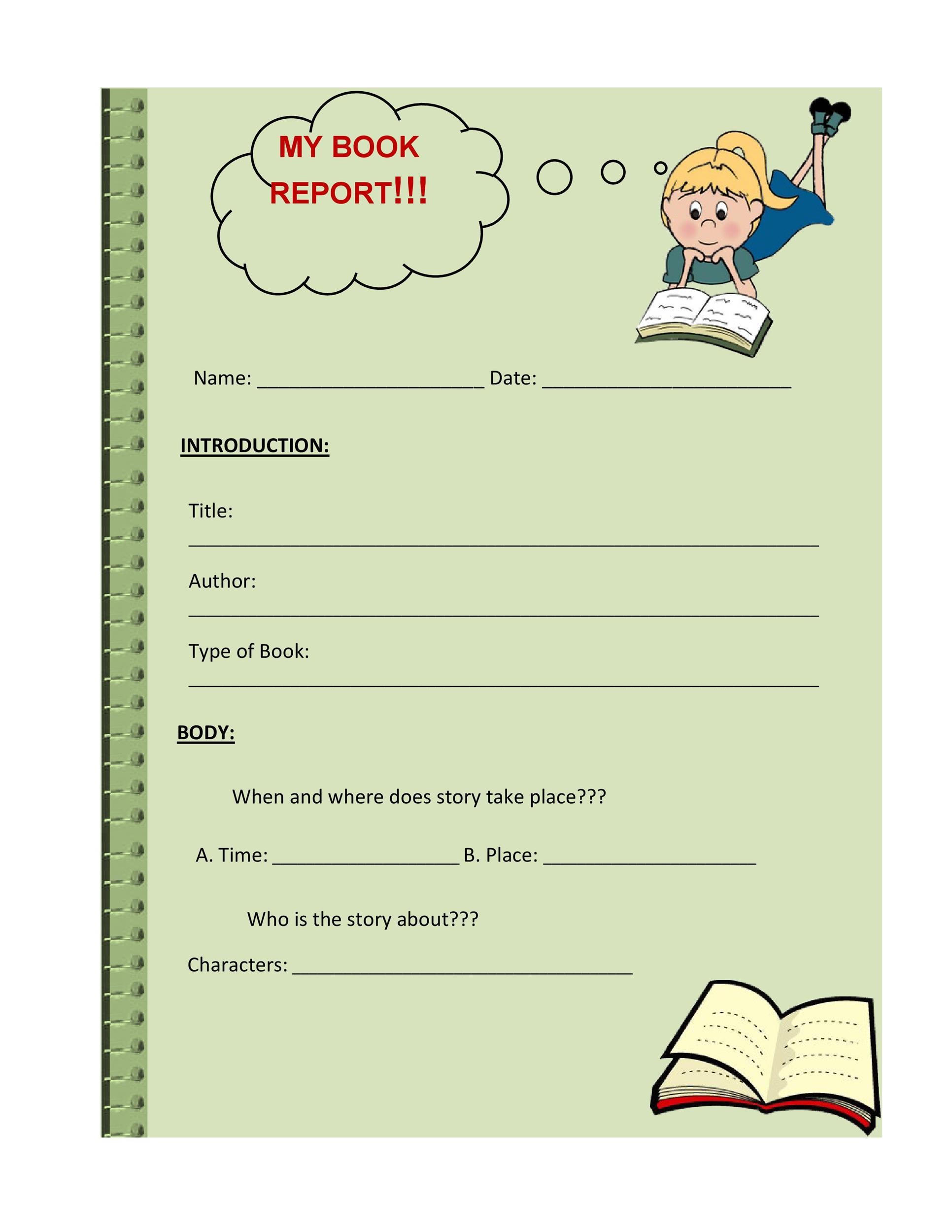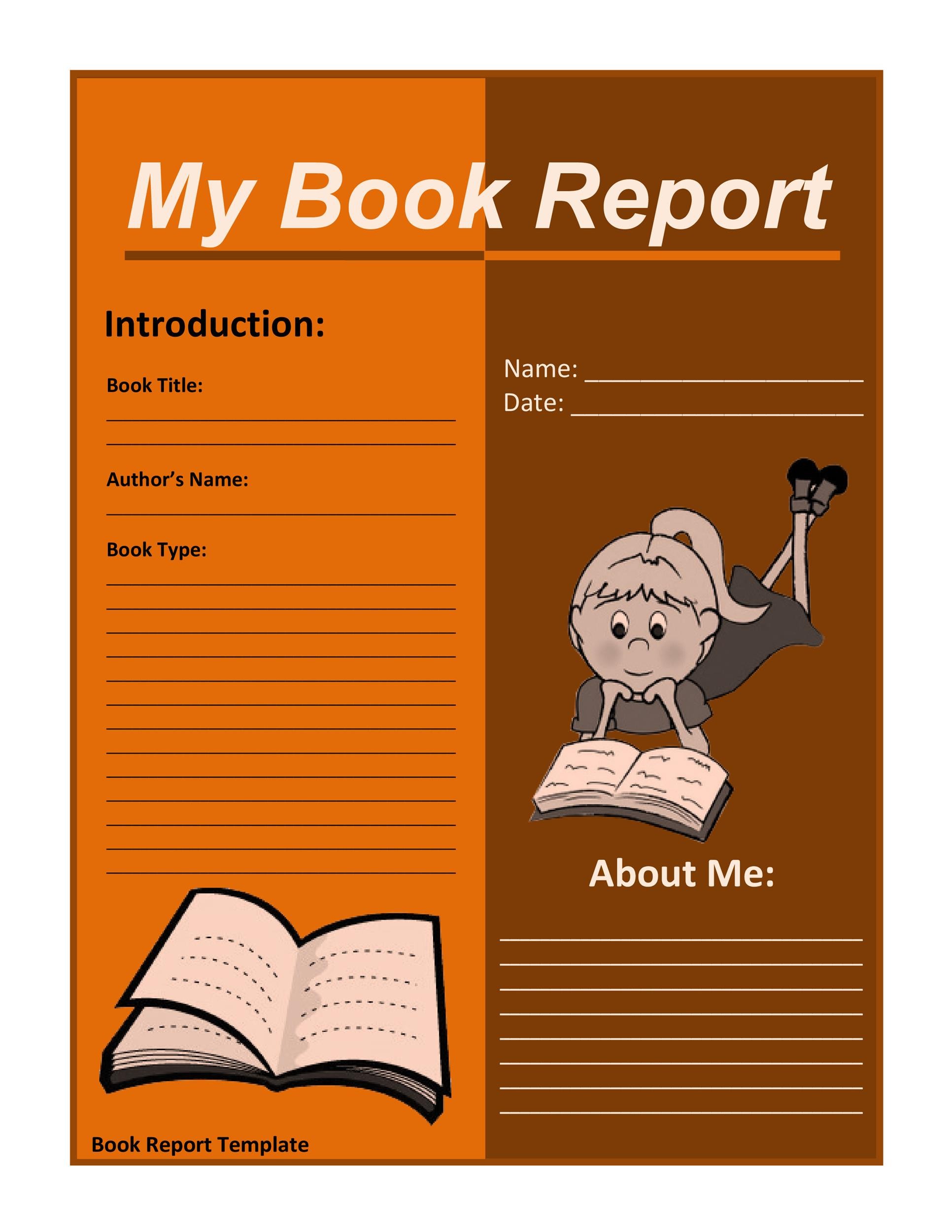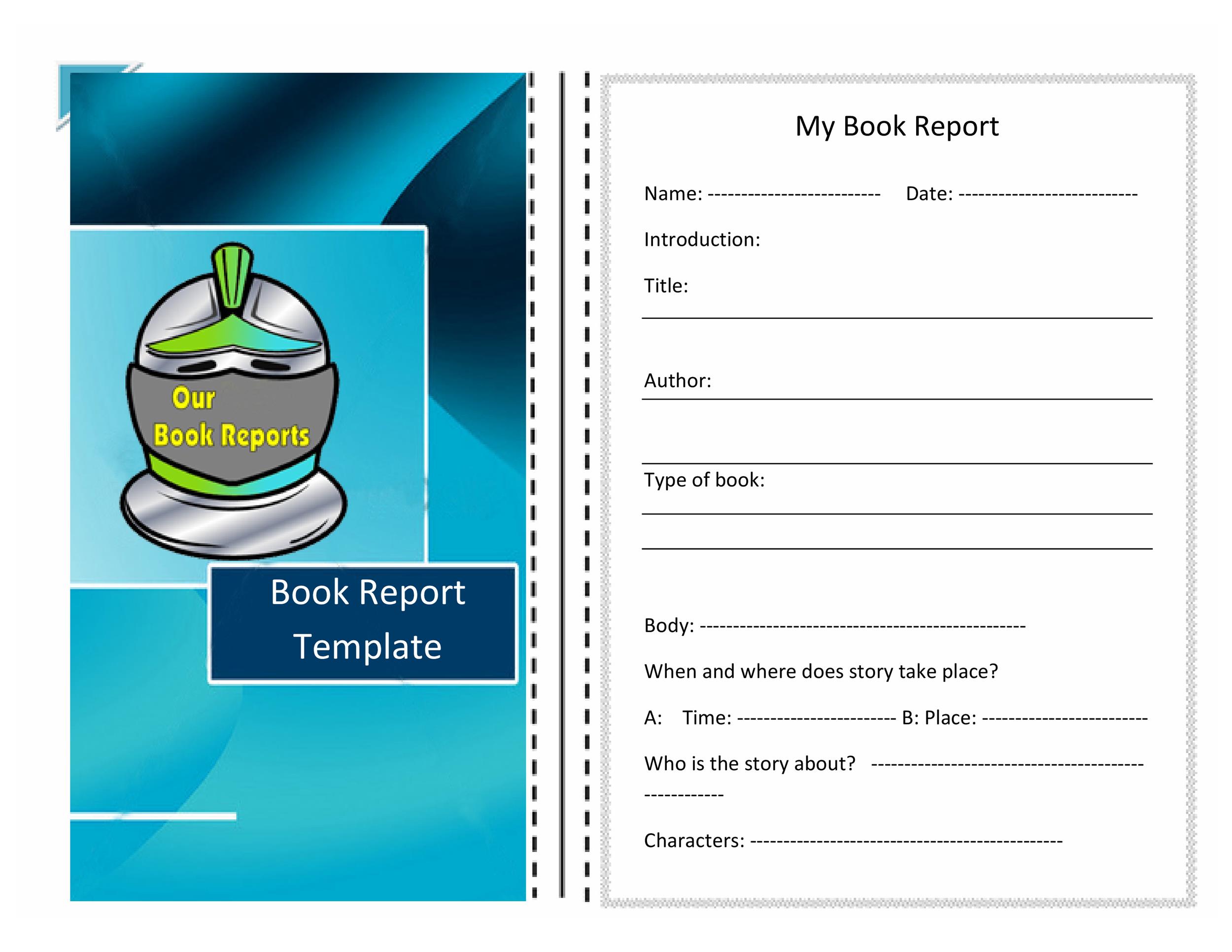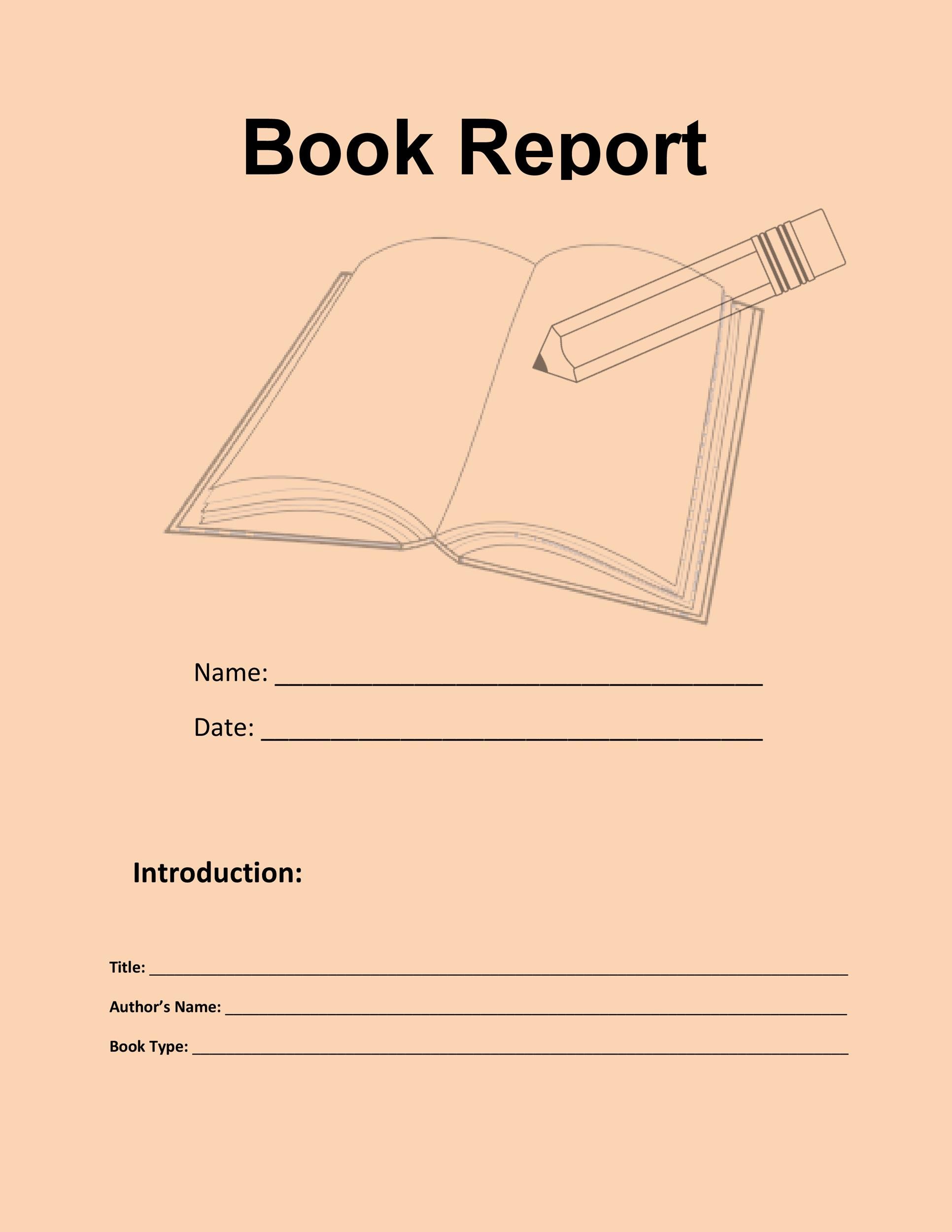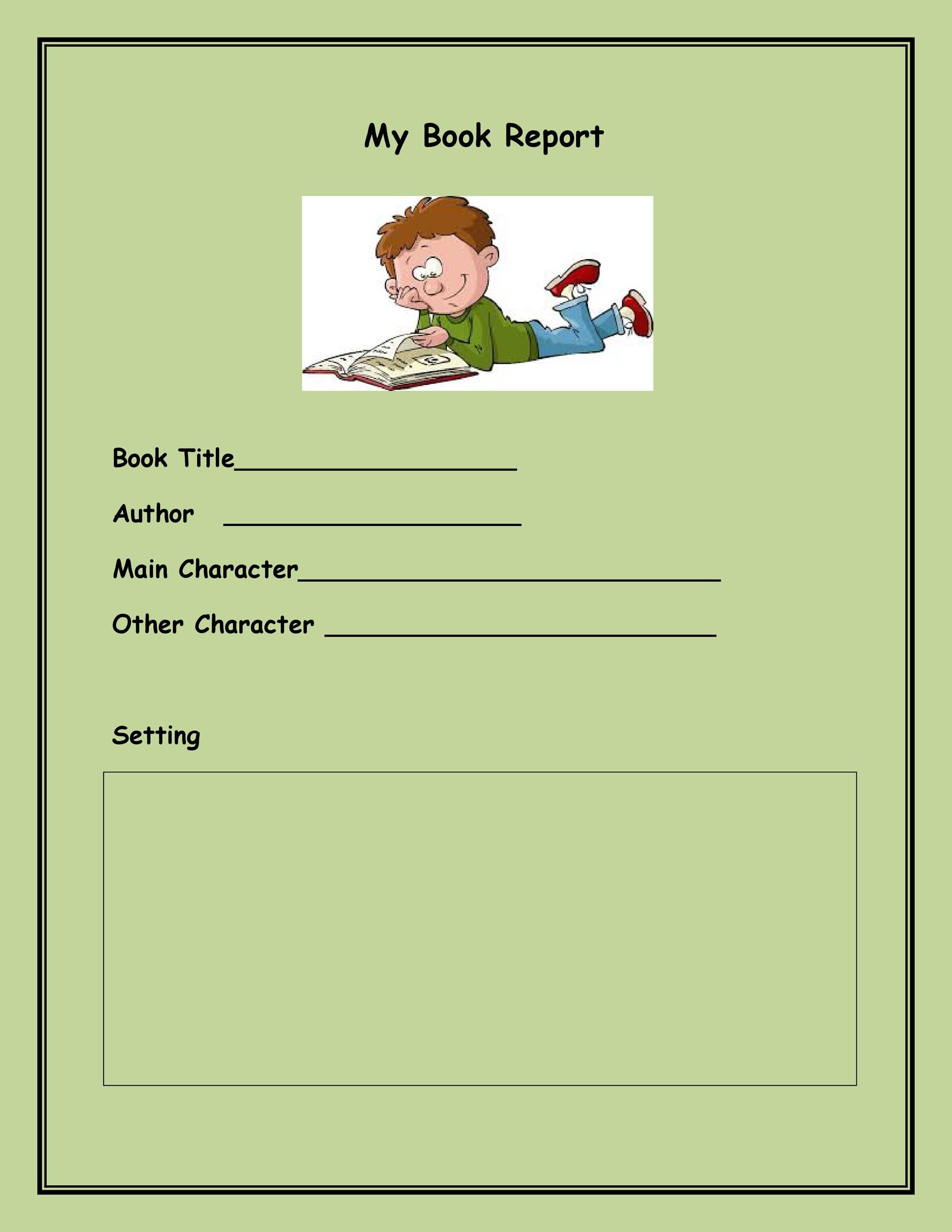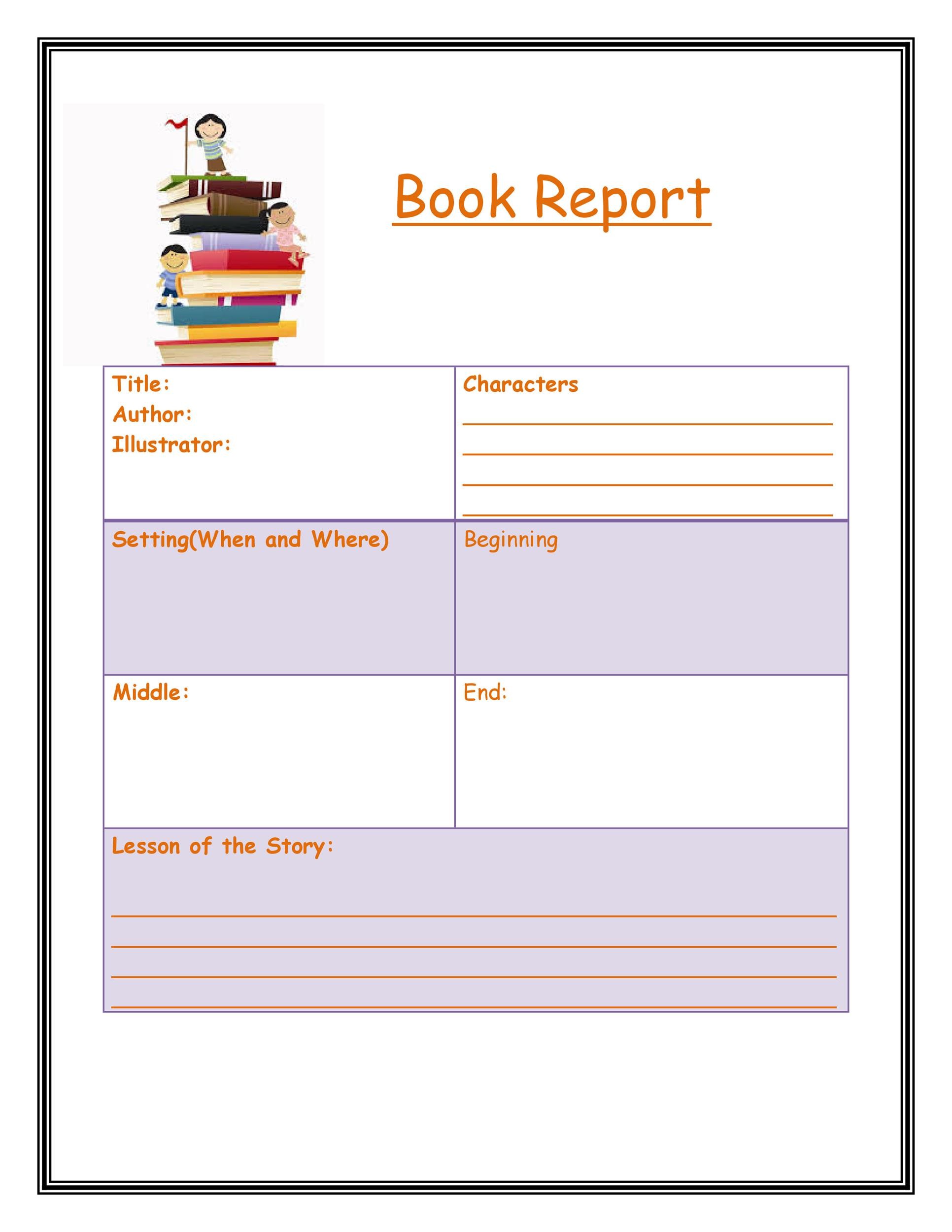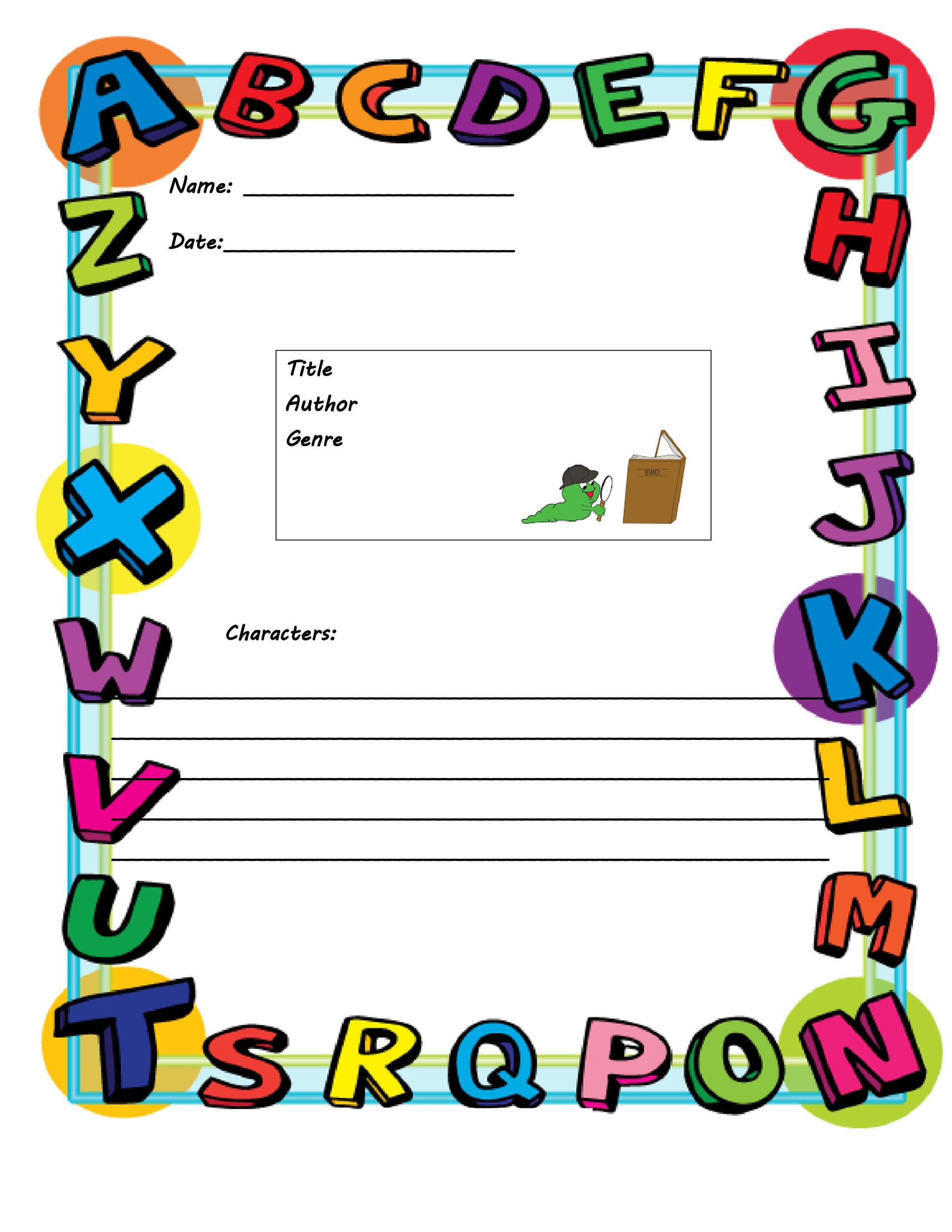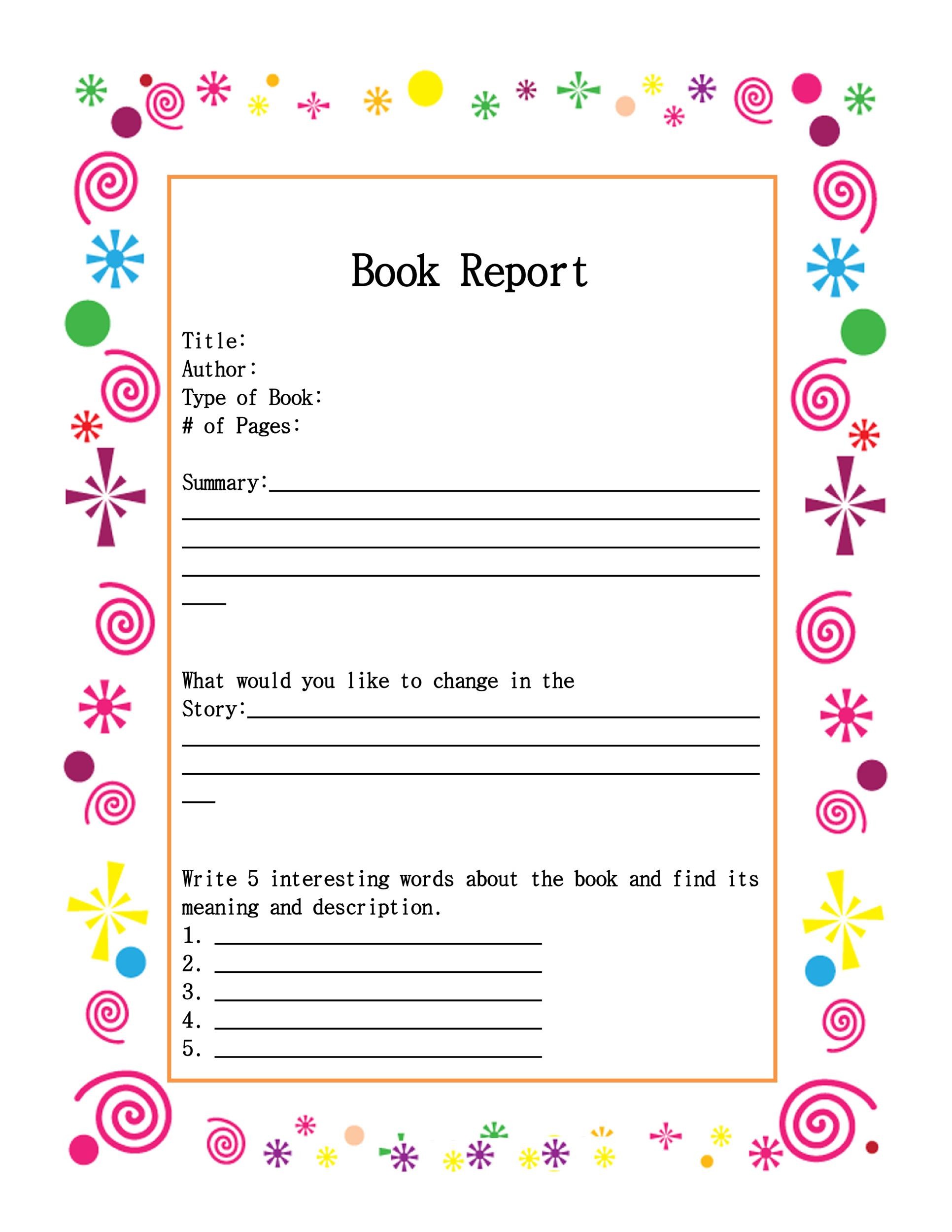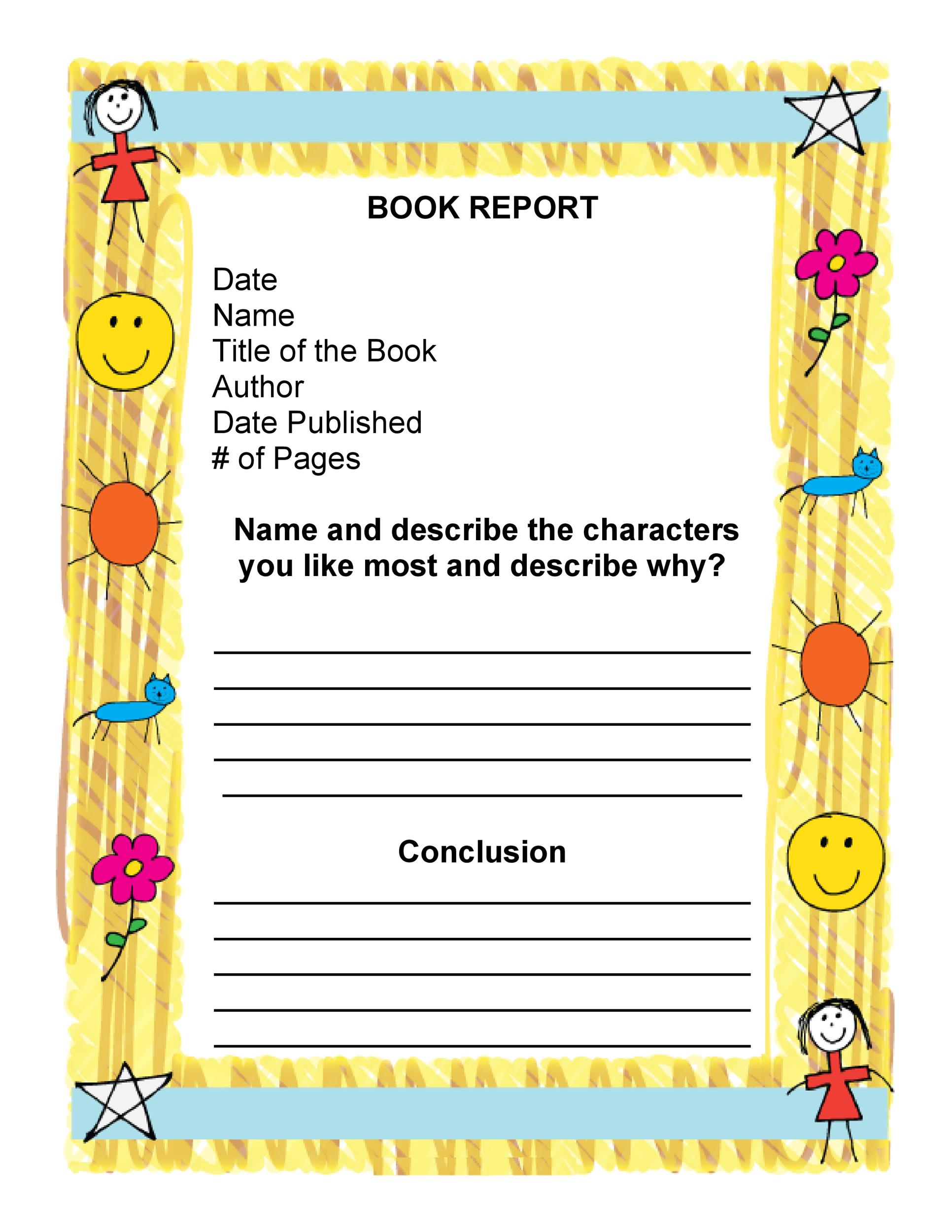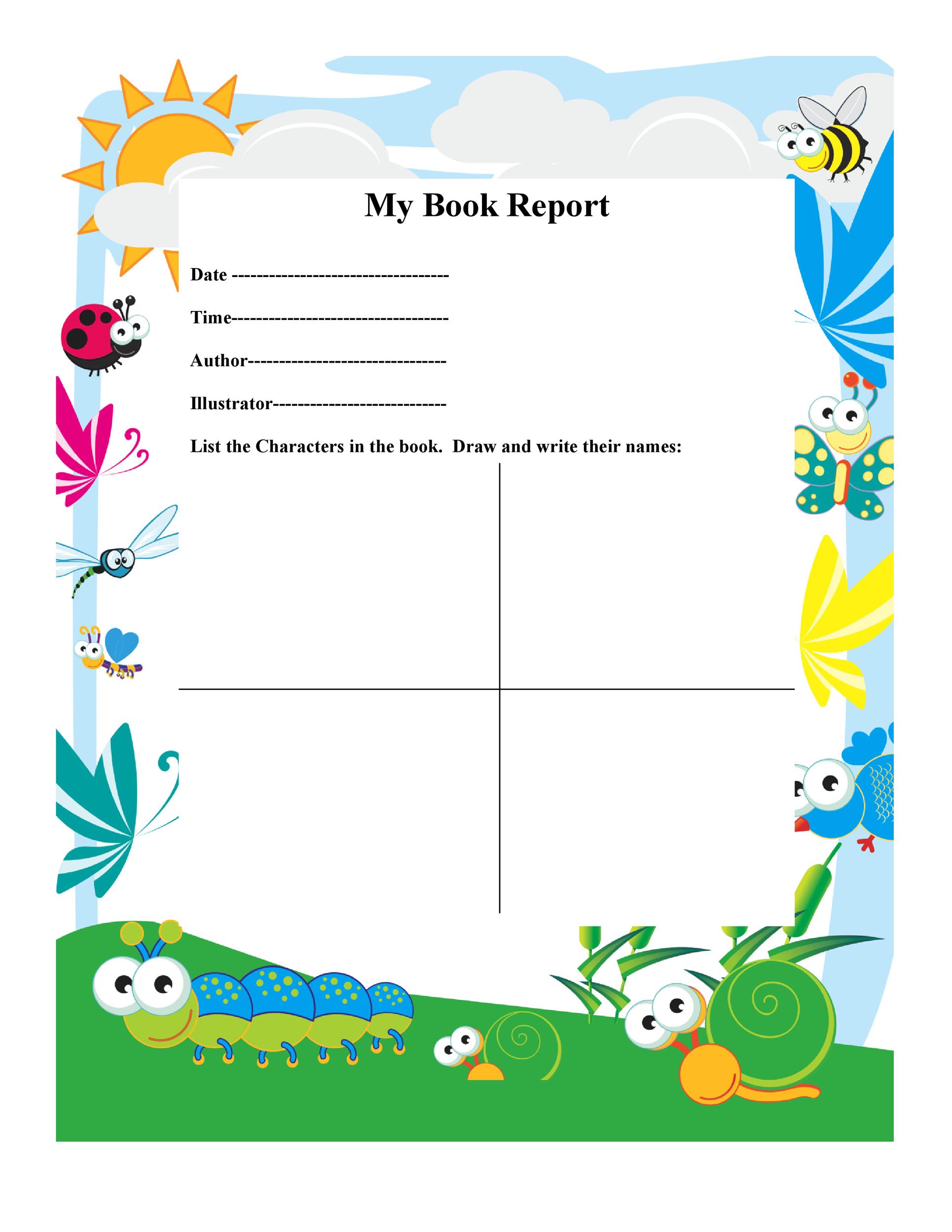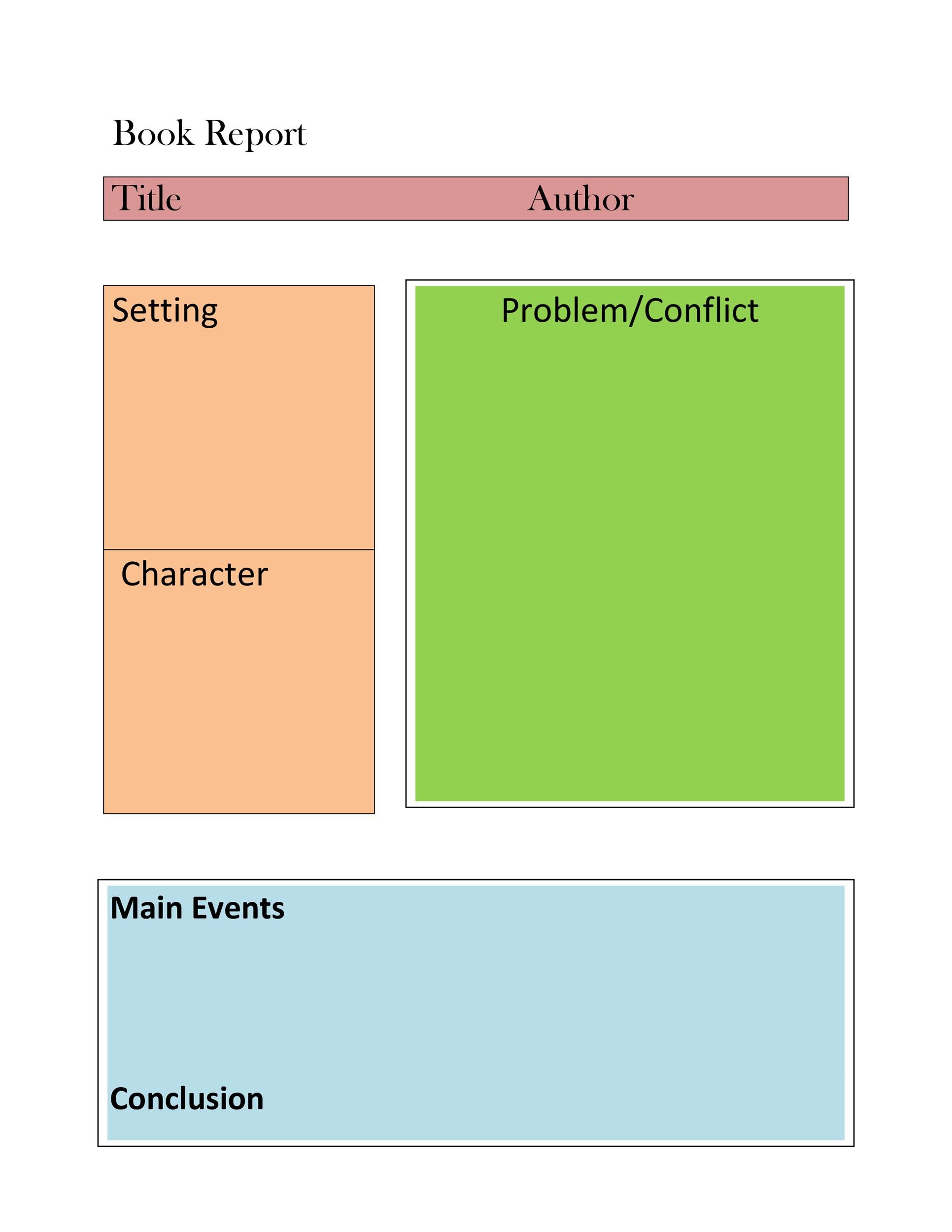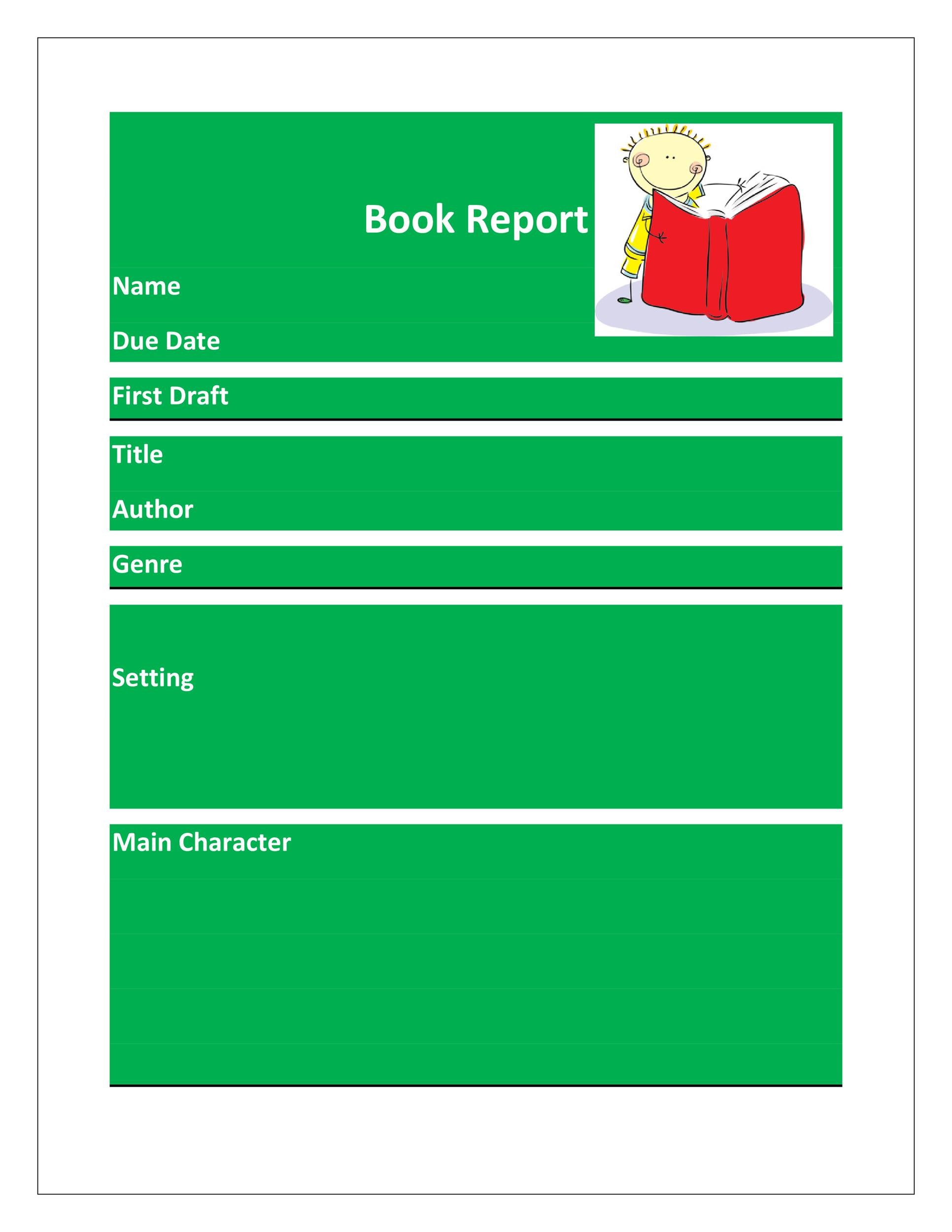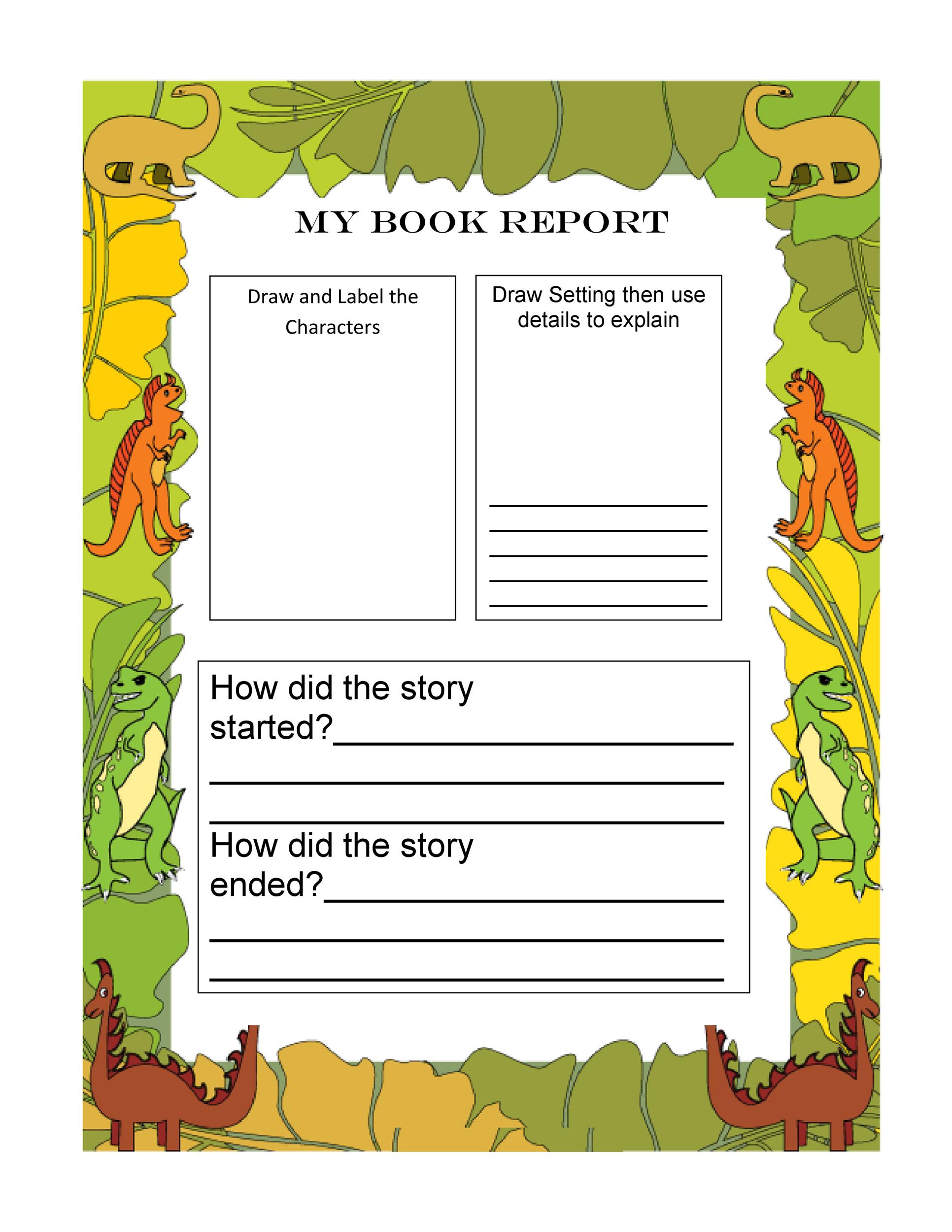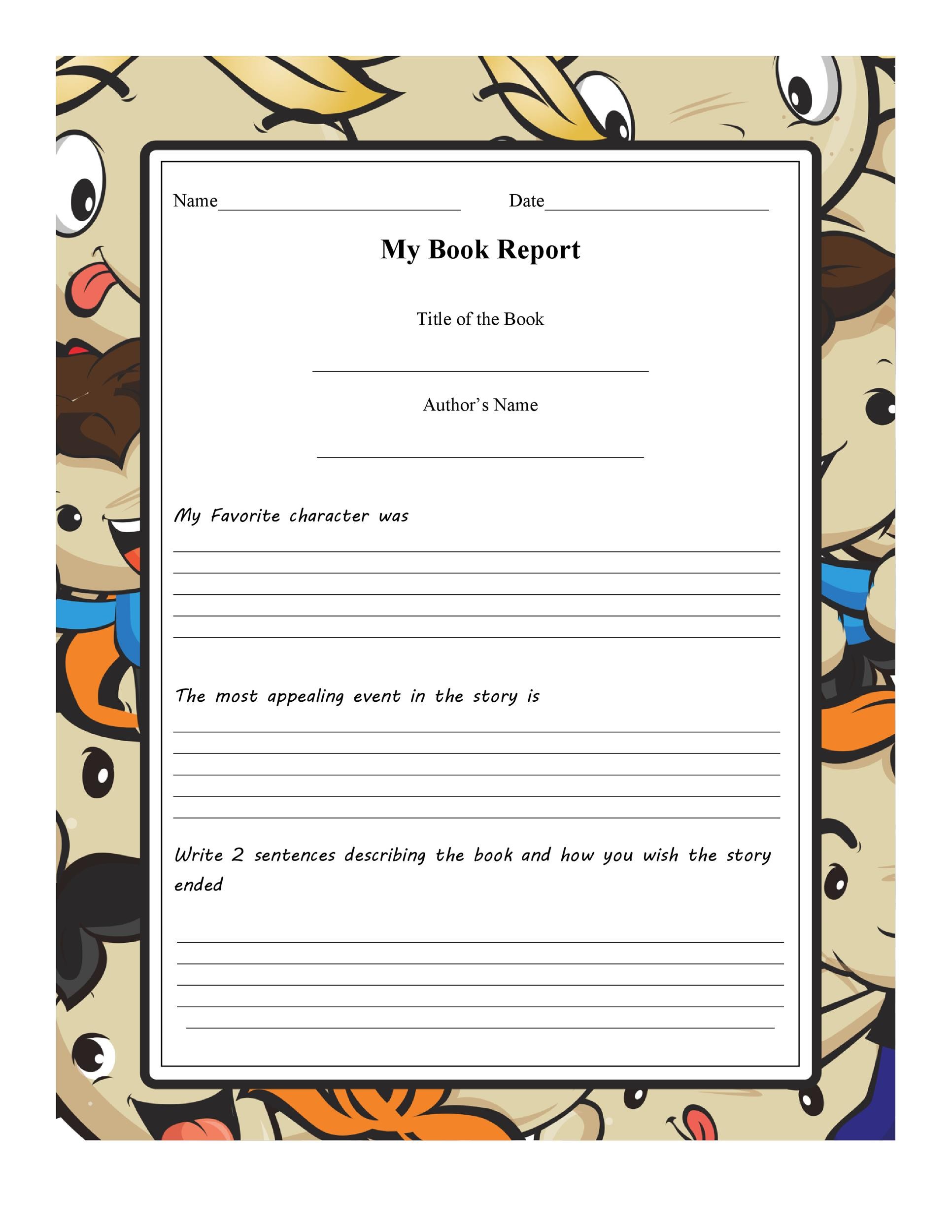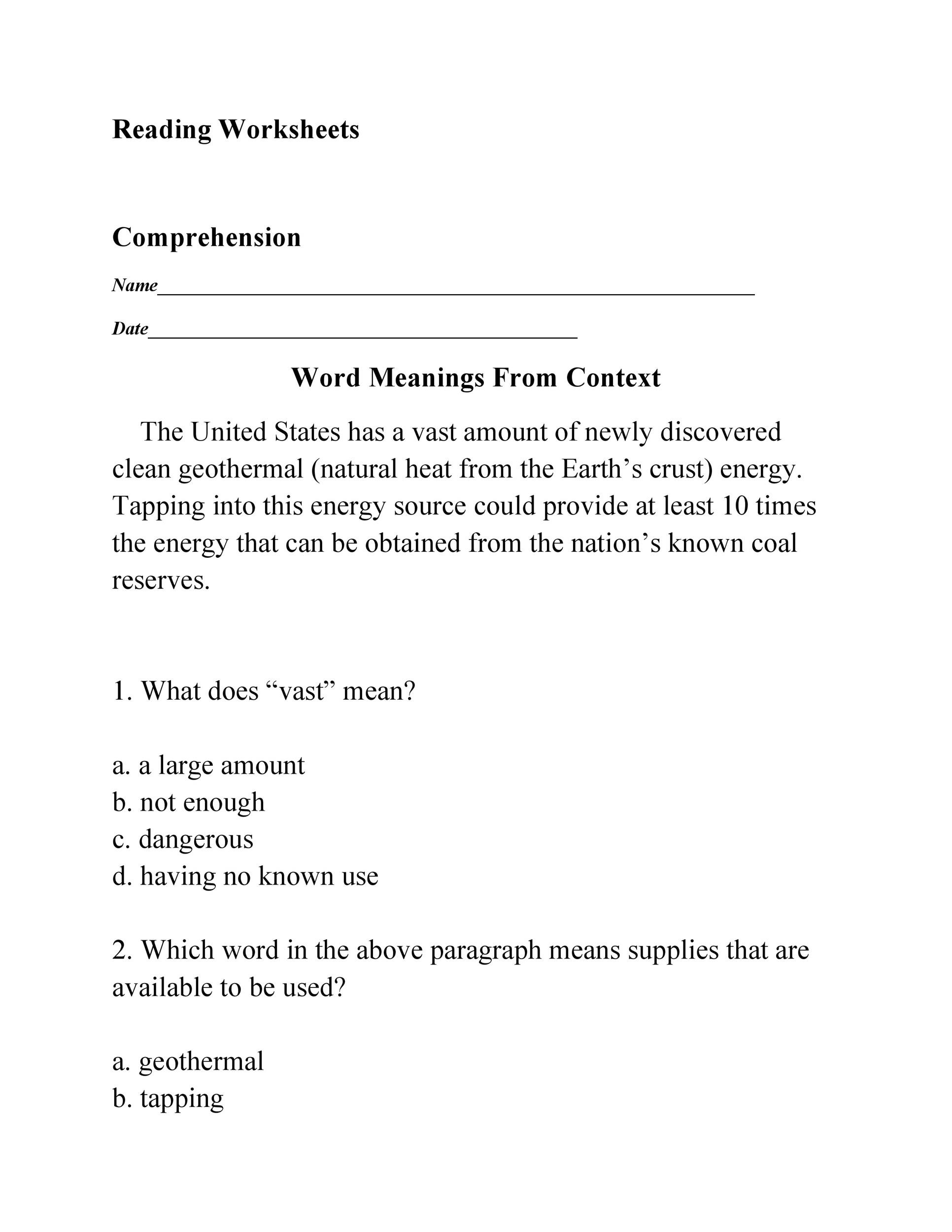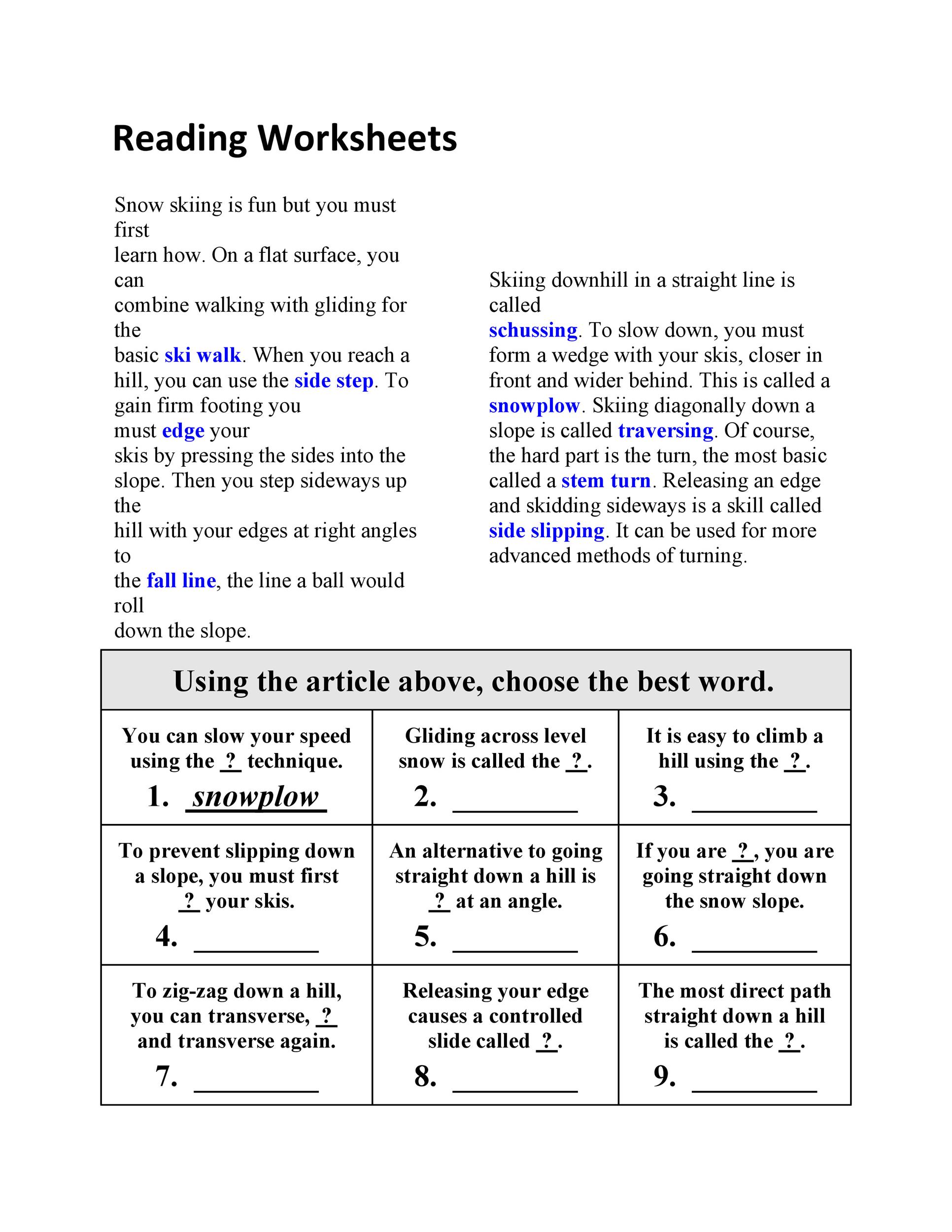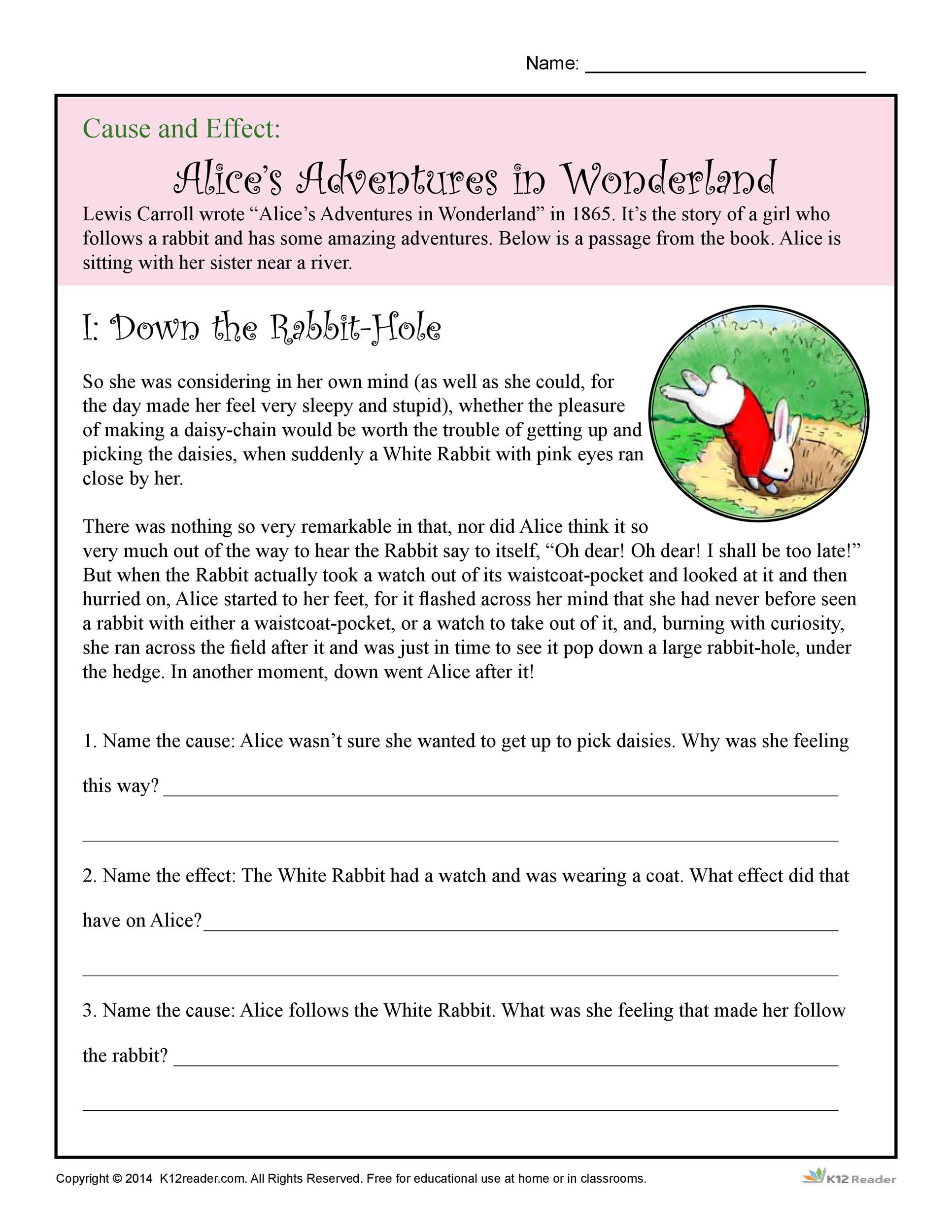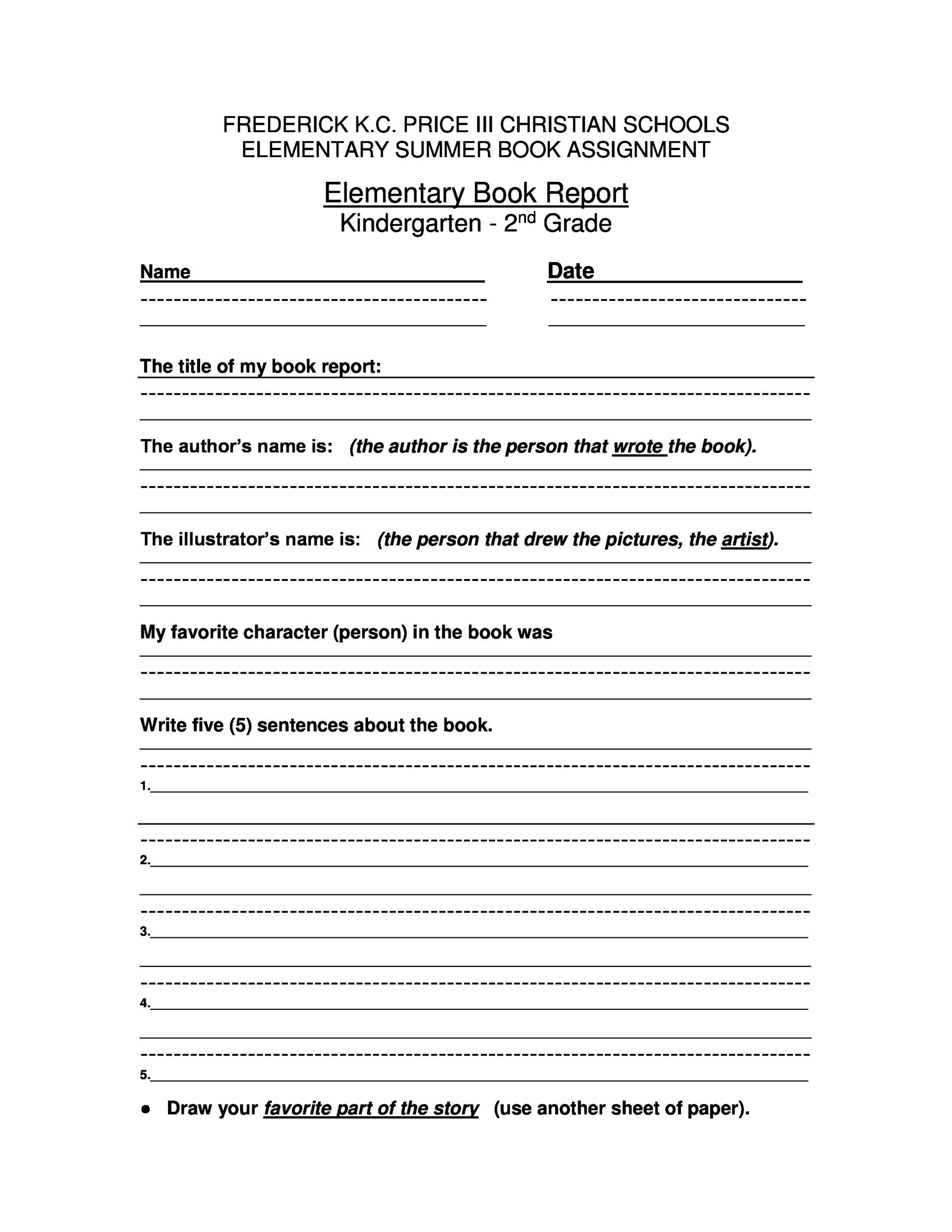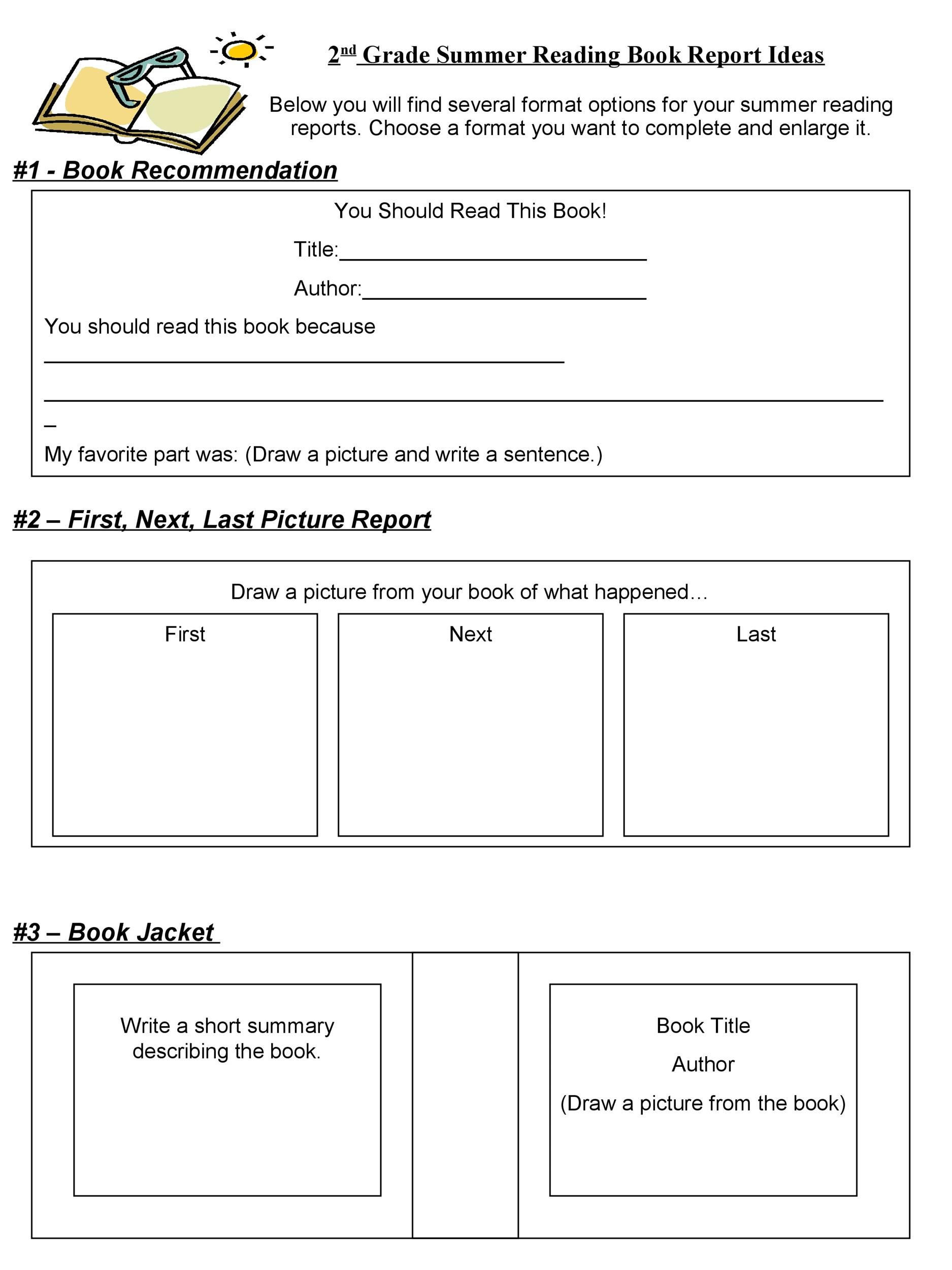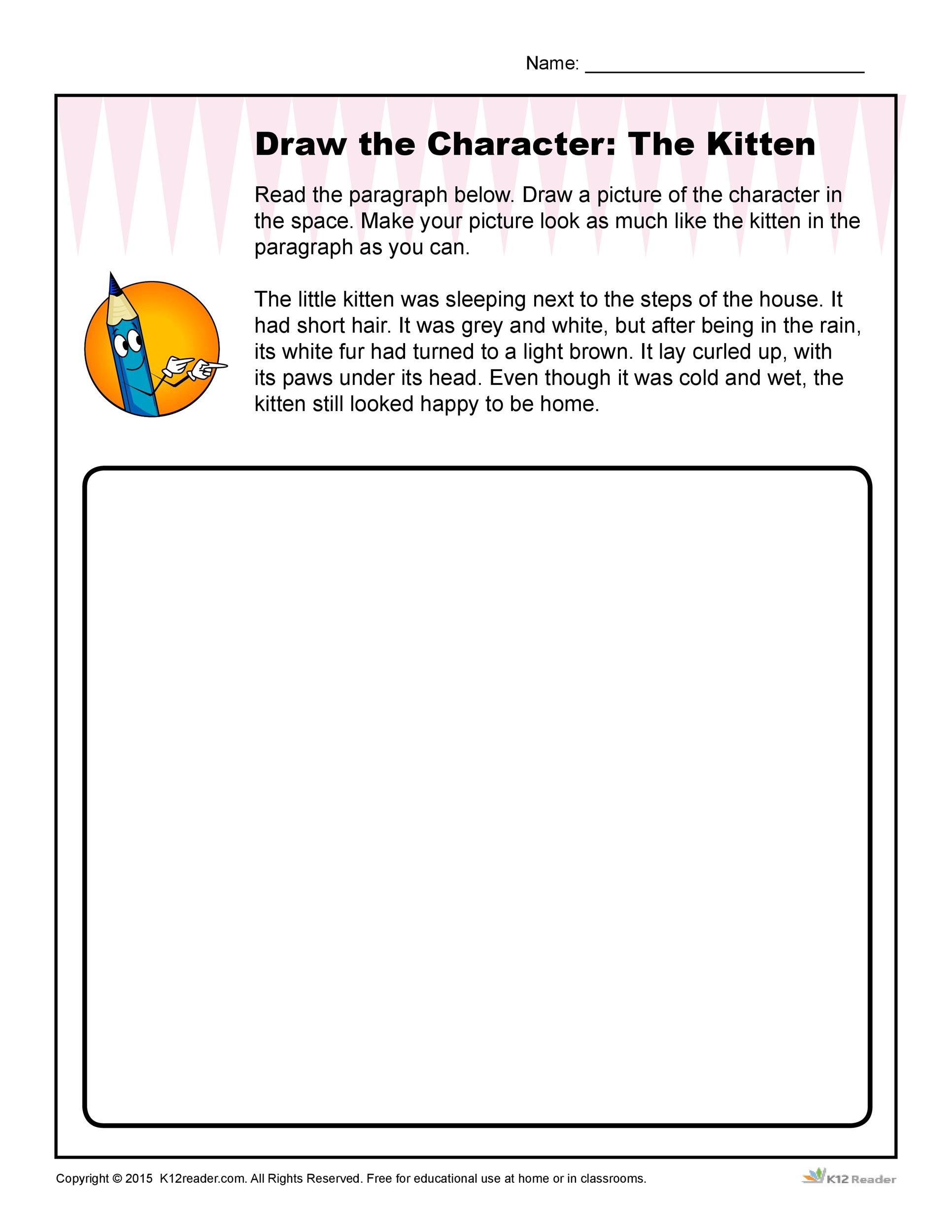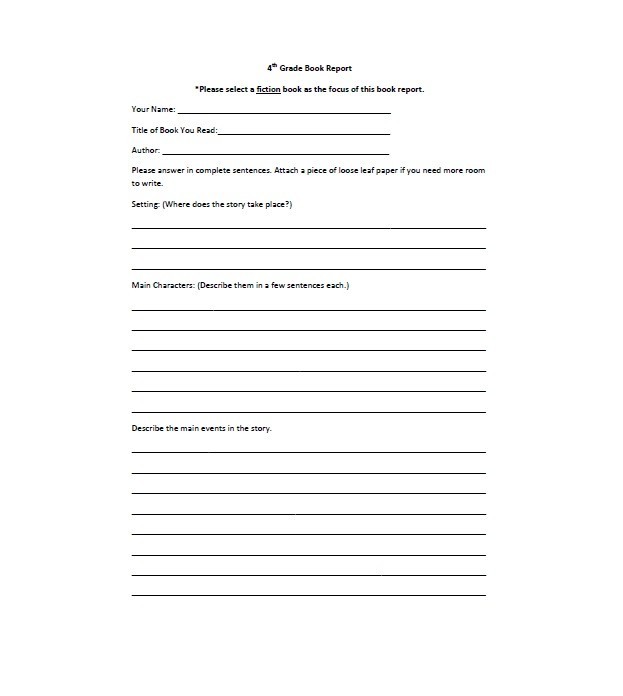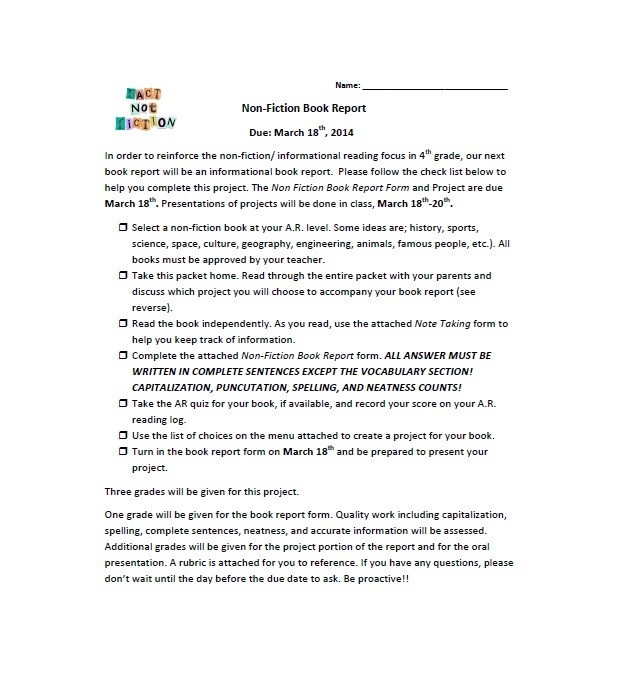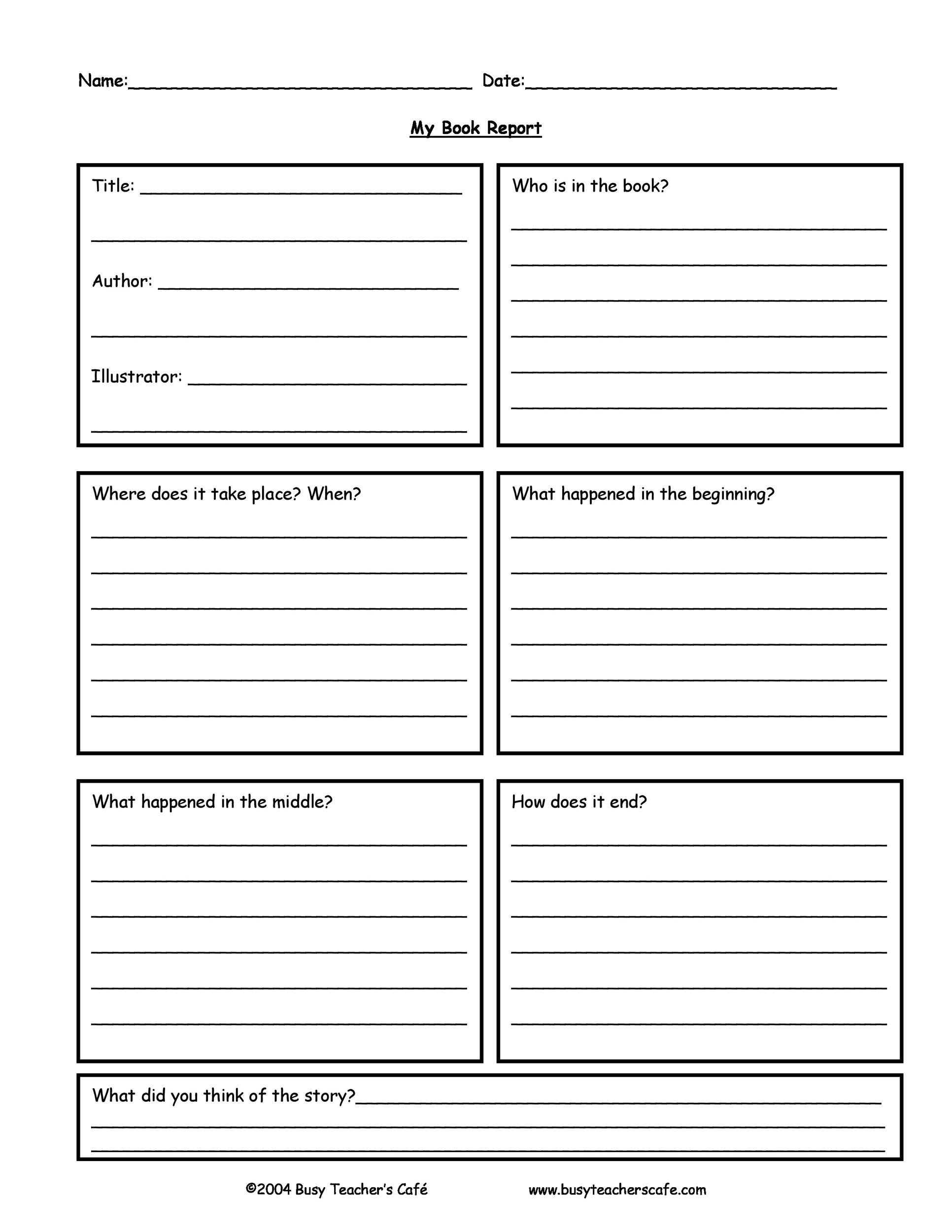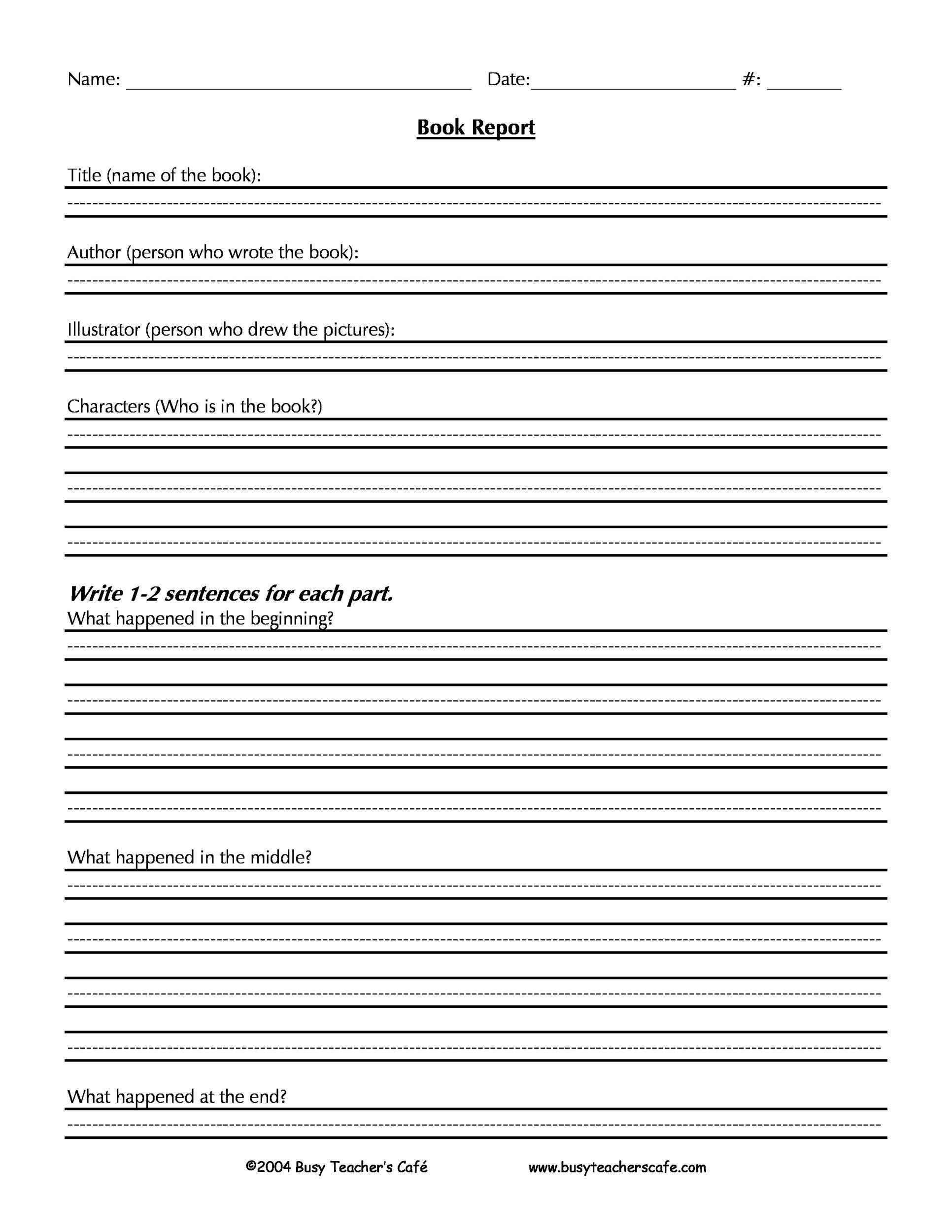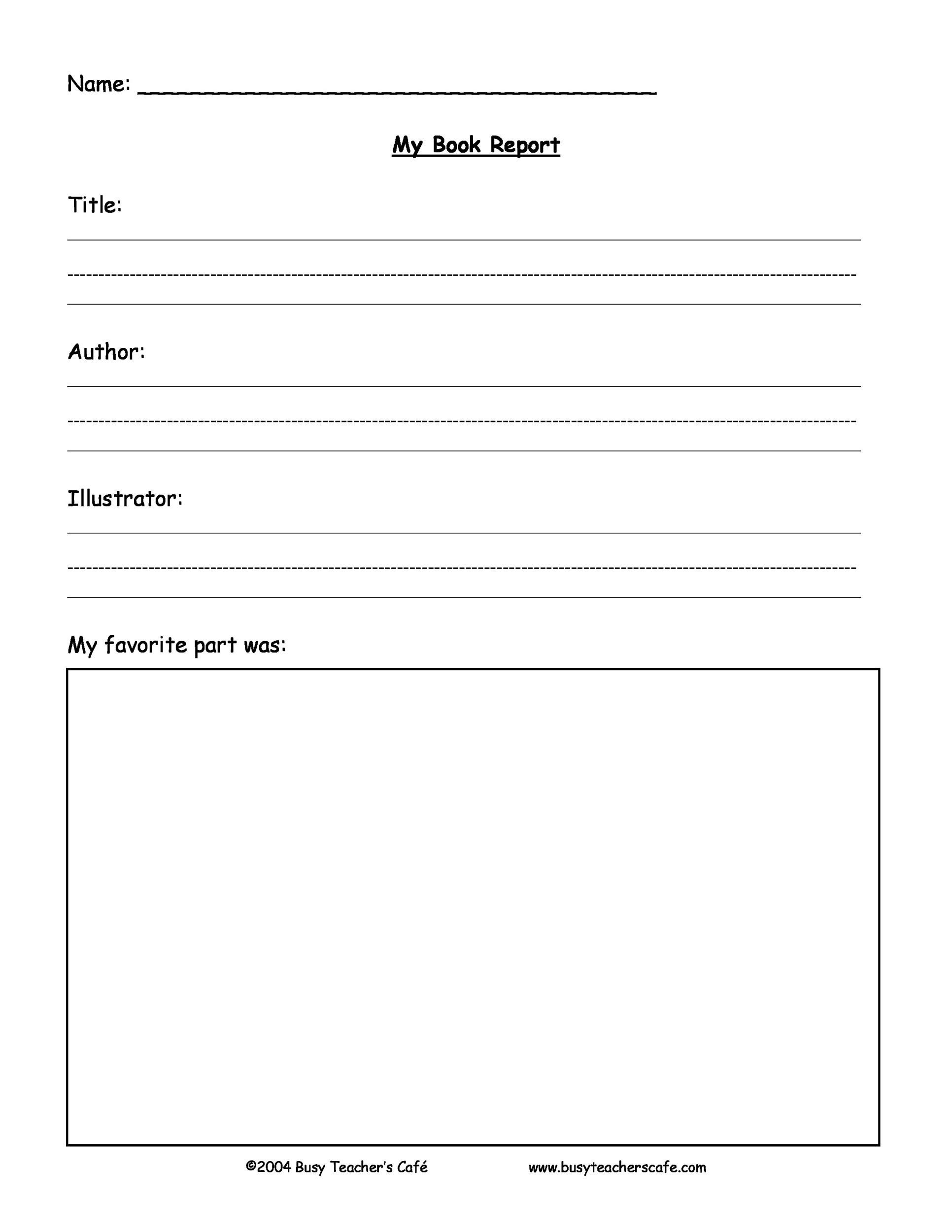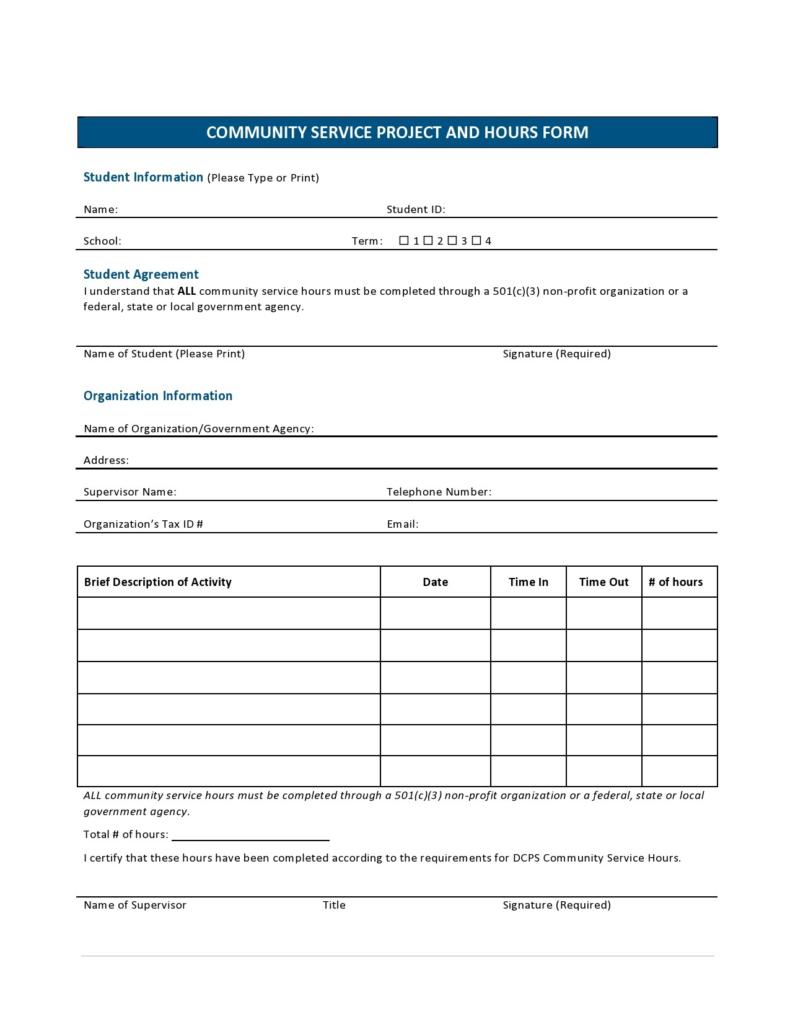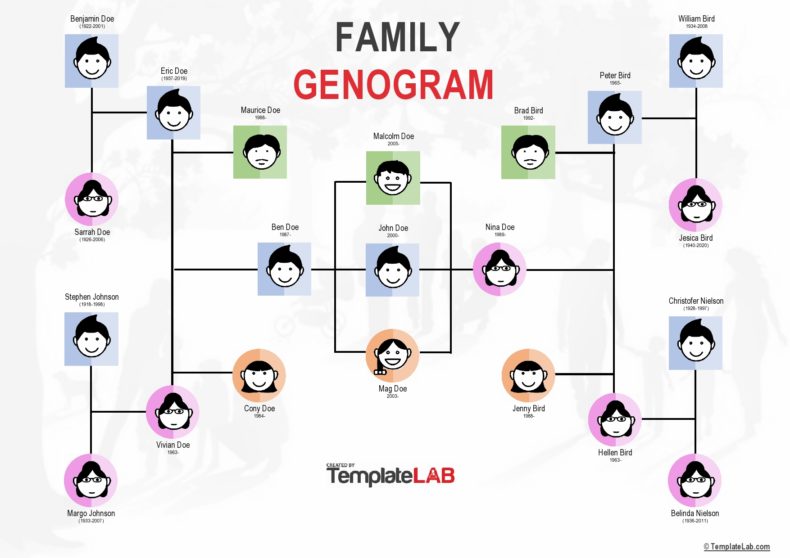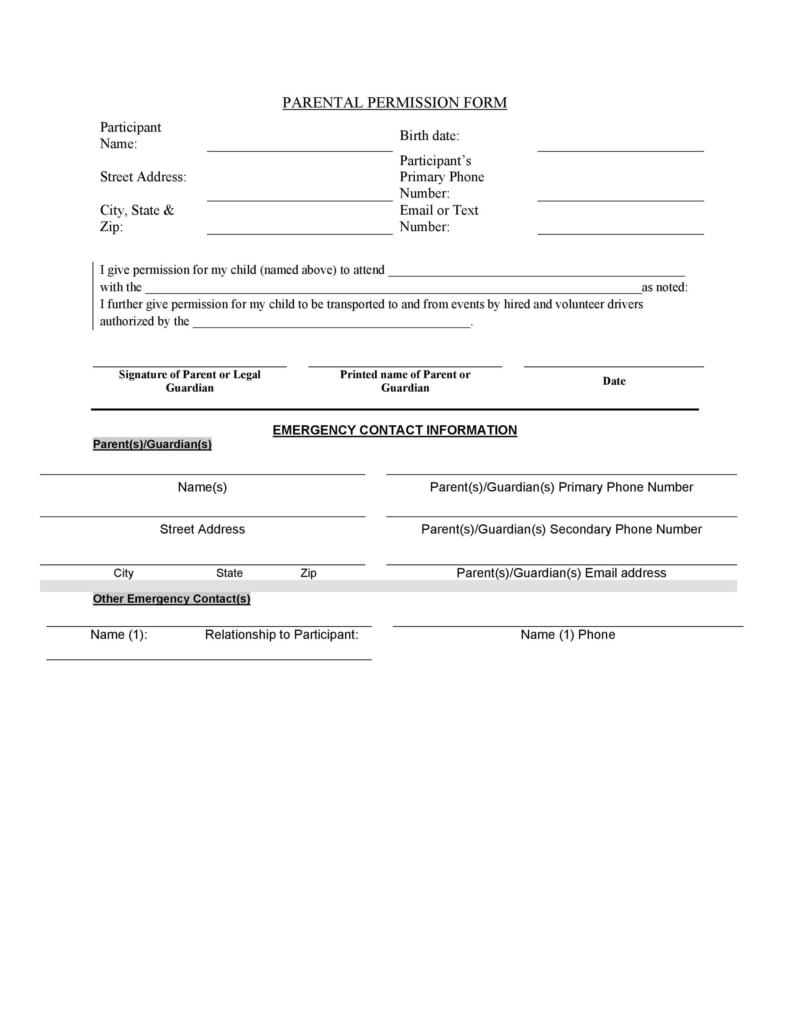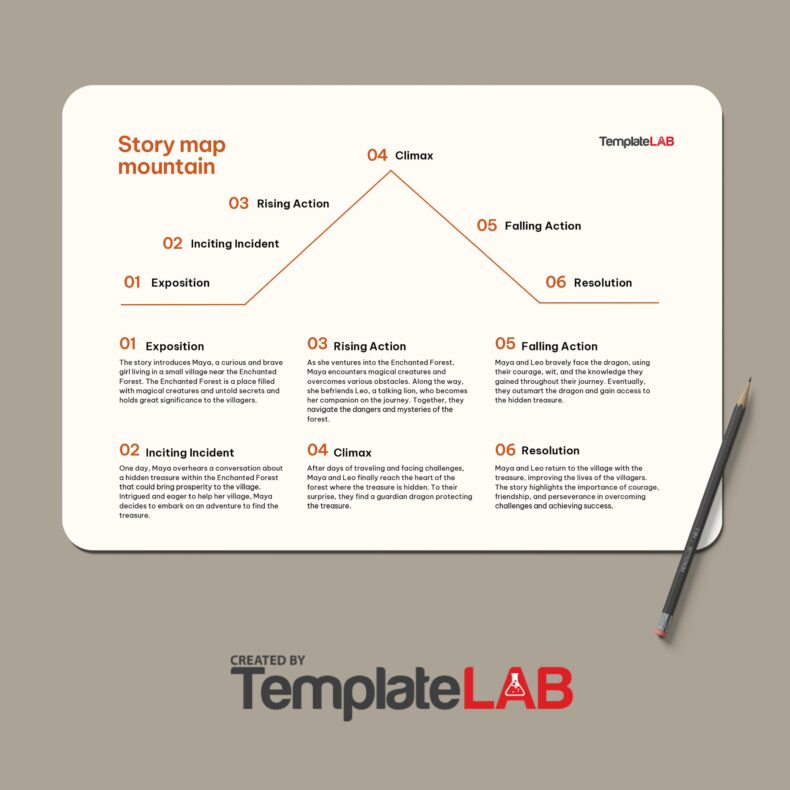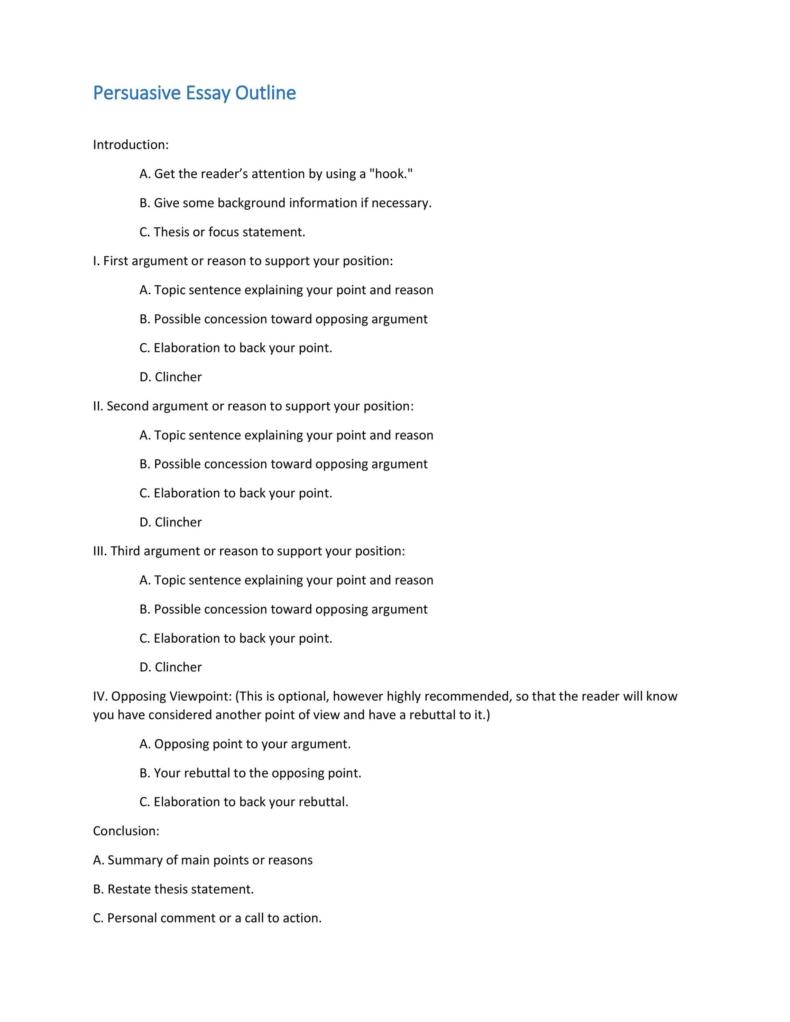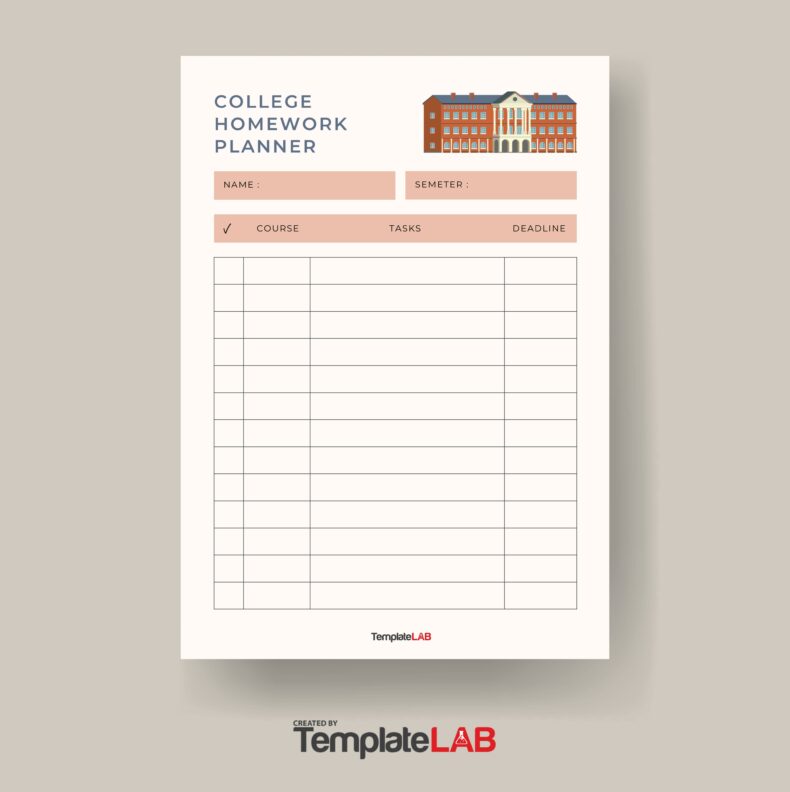Reading helps students develop a strong imagination, encourages their creativity, and strengthens their analytical skills. Teachers assign a lot of book reports to ensure that students read lots of books, especially at that critical early age when they are still trying to master the written word. To cut down on some of the workload, students and teachers can find a book report template to download and fill in. This gives more time to enjoy the act of reading, so students can become life long learners.
Table of Contents
What Is A Book Report
A book report is typically given as an assignment to students in elementary and middle school. Students fill out a form answering basic questions about the book they were assigned to read. Turning in the report serves as proof to the teacher that the student read the book and, hopefully, got something out of it.
These reports may ask students to detail what the book was about, the names of the main characters, what the theme of the book is, and where the events are set. Some reports may ask specific questions about events or characters to ensure that the students read the book all the way through. The report can also help students understand the book better by asking them to think about its meaning and the plot.
Book Report Templates
Reading Worksheets
Teachers may also hand out worksheets for students to complete in class or as homework. These are usually limited to the earlier grades when students are still learning to read. Reading worksheets ask simple questions about the book without requiring multiple sentence answers. These questions may ask students to name a favorite character, or mention the main conflict in a few words.
It’s not uncommon for the teacher to read a picture book with the class and have students fill out a worksheet afterwards. If the classroom has a bookshelf, there may also be a ‘Reading Time’ when students pick out a book to read. When they finish, the students fill out the worksheet and submit it to their teacher.
Why Provide A Book Report Form
Book report forms are a popular choice of assignment for elementary school classes. These forms make it simple for students to complete the report by filling out the worksheet. These sheets can be generic with standard questions, or teachers may create a unique sheet with questions specific to each different book that is assigned.
These forms also help introduce students to the idea of a book report format and show them what kind of information may be expected on longer, multi-page reports that they are expected to complete in the higher grades. A form is also easier to grade, especially for teachers who have a large classroom and more assignments to go over than usual.
Sections Of A Simple Book Report
A simple book report features a few sections that ask students to answer questions in paragraph format. These each ask students to detail a different element of the book. All book report forms will ask for the title, author name, and the illustrator’s name, if it is a picture book. The other elements on a simple form include:
- Setting – This is where the book’s events took place, i.e. New York.
- Characters – A list of who the main characters are and their names.
- Plot – A basic overview of the major events in the book.
- Your impressions – Whether you like the book or not, and why.
A simple form may also just ask the students to describe the beginning, middle, and end events of the book in three questions. Students may also be expected to identify the climax, which is the most intense point of the book where the main character’s problems are resolved or made worse. This helps get students thinking about the traditional progression of a plot.
Sections Of A Multi-Page Report
Eventually, teachers transition students to writing a multi-page book report. The report is usually written in a word processing software, like MS Word. Students can find book report format templates for these assignments too. These longer reports are written out in paragraph form. The teacher asks the students to address different elements of a book in their own words or with their own formatting. A simple way to organize these reports is to divide them into three basic sections, the introduction, main body, and conclusion. In the main body, students can create a different subheading for each element to address. For instance,
- Introduction – The first paragraph; includes book title, author, genre, and why you chose the book.
- Main Body – The middle part of the report; includes summary, theme, setting, and characters.
- Conclusion – A short summary of the book report and opinion of the book.
Sample Book Reports
Difference Between The Book Report Types
The short book report form is handed out by the teacher and can be completed in one night like a homework assignment. A multi-page report is created by the student and may take more than one night to finish.
Short templates are available in lots of fun book report ideas suitable for young children. They have questions with a few lines to hand write the answers in a few short sentences. Some templates may include activities to make them more interesting to students, such as having them draw out a scene from the book or re-write the ending.
Multi-page reports start out as two page reports and gradually increase in size through middle school and high school. Of course, those two page reports are just as difficult for young students as the five page reports are for high school students. The great thing about these assignments is that students are usually free to organize their book report ideas however they desire. They can create bold sub-headers for the main body of the report. Students can write about the theme, characters, and setting separately. Or they can leave out the headers and devote their report to a specific element, such as the book theme. This allows students to weave information about characters and setting into the report where they are most relevant to the theme. The former works well for short chapter books, and the latter is better for books that may feature multiple themes.
Ideas for Different Kinds of Book Reports
There is more than one way to complete a book report. Both teachers and students may find these creative ideas more interesting than a straightforward report.
Write a review of the book. Create the report in the form of a newspaper or blog review. Summarize the book without giving away the plot or the ending. Talk about what made you like it or, if you hated it. Feel free to give the book a thumbs up or down rating at the end.
Do a diary. Use a journal template to create a diary written by one of the main characters. There should be multiple entries that follow or discuss the events of the book from that character’s point of view.
Interview one of the characters. Create an imaginary interview with one of the characters in the book. Ask them questions about where they come from, why the character did something important to the plot, and what the character thinks about the outcome of the events in the book.
Write a newspaper article. Create an imaginary newspaper article detailing one of the major events in the book, such as a theft or an important discovery. Make sure to answer the who, what, where, when, and why of these events in your article.
What To Do Once You’ve Written The Report
When students finish writing out their book reports, they have completed what is called the “First Draft” or “Rough Draft”. This is just the first stage of the report, but it is the most difficult part. Finishing up that report in the following steps is a lot easier.
Read and mark the report. Read through the book report from beginning to end to get a feel for it overall. Get a brightly colored pen to mark any spelling or punctuation errors you find in the report. Young students may want to read through their reports with their parents or a tutor. Sometimes, teachers actually make students submit a rough draft of their reports for points before the final report is due. The teacher reviews the draft, makes edits, and suggestions for changing the report before final submission.
Make edits to the report. Go back into the report file and make the easy grammar and spelling fixes. Take a look at your teacher’s suggestions or the ideas you wrote down for things to change in the report. Create a plan to make those additions or changes. Make the changes to the report. Don’t forget to save your file as a separate document. For instance, save your rough draft as, Report1.doc, and this updated version as, Report2.doc.
Review the report. Print out a fresh copy of the report. Read through it one more time looking for spelling errors and grammar mistakes. Keep an eye out for spots where the text doesn’t make sense. This can sometimes happen when you add new content to a report. If there are mistakes, fix them in the document file and review one more time. Your final draft is ready to print out when you can no longer find any mistakes.
Book Report Examples
Tips for Teachers
Book reports are a big part of the curriculum. That doesn’t mean they have to be a lot of work for the students or the teacher. Make assigning these reports less of a hassle with these tips.
- Assign one book for the entire class to read. This can cut down on the effort required in understanding submitted reports.
- Pick out a short book report template to use. There is no need to use valuable time in creating one from scratch.
- Print out more copies of the form than are needed. Some students may lose theirs and need an extra form.
- Make reminder announcements when a due date approaches. Remind students at least twice before a book report due date.
- Keep the word count requirement low. Teachers also have to spend more time reviewing longer reports.
- Consider creative alternatives to some written reports. When your curriculum includes a lot of book reports, give students the option of turning in a drawing, diorama, or another project as a break.
Tips for Students
Being assigned a book report to complete can seem like a daunting task, especially if if you have never written a multi-page report. Make sure you don’t fall behind on the work by following a few of these tips.
- Make up a reading schedule to complete the book well in advance of the report being due. Use a calendar to remind yourself.
- Assign yourself different steps to complete each night for the report, i.e. make an outline, write 200 words, or revising
- Ask the teacher for help with ideas if you can’t figure out how to get started.
- Look for examples of completed reports to see how they are structured.
Book reports vary in their length and complexity. Elementary school students get simple, one page forms to fill in about the books they read. Those in middle school and high school usually have to write multiple page reports. Nearly all reports require students to talk about the plot, theme, characters, and how they liked the book. Both students and teachers can find a lot of templates to use. Those looking for something generic for students to fill in after reading a book can pick up a .pdf or .jpg form. Those who want more control over the look and wording of the template should download a .doc file.

